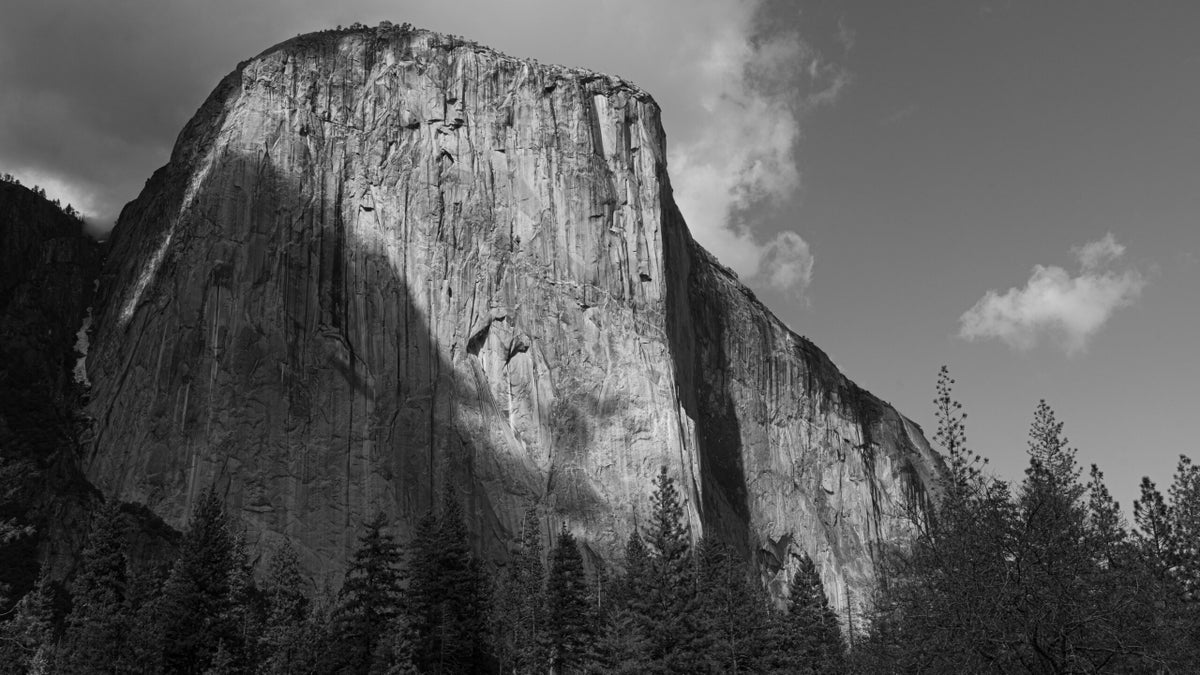
The 23-year-old Alaskan achieved impressive solos of historic routes—with glitter on his cheeks.
The post Bold Young Alpinist Balin Miller Dies in Yosemite appeared first on Climbing.
]]>
Balin Miller was fast becoming a legend in the climbing world. The 23-year-old had spent the year of 2025 making a name for himself, with historic solos—and soloing sprees—from Alaska to Patagonia. On October 1, Miller fell to his death from 2,400 feet on Yosemite’s El Capitan. In a horrifying set of circumstances, his death was captured on a stranger’s livestream with some 500 people watching.
Just after midnight on October 2, his mother, Jeanine Girard-Moorman, shared on Facebook, “It is with a heavy heart I have to tell you my incredible son Balin Miller died during a climbing accident today. My heart is shattered in a million pieces.”
Miller had been climbing Sea of Dreams (5.9 A4), one of the most challenging aid routes on El Cap. On September 29, he was photographed by Tom Evans, the creator of the once-daily El Cap Report.
On October 2, Miller reached the top of the last pitch of Sea of Dreams, but his haul bag got stuck on the terrain below. As he descended back down his lead line to free his bag, Miller rappelled off the ends of the rope. Evans described the incident on Facebook and later verified his report with Climbing. No additional information from Yosemite National Park staff or local officials has been released.
The livestreaming of a fall
Eric (who asked that his last name be withheld), a blogger and content producer who calls himself a “Yosemite super fan,” had been livestreaming Miller’s Sea of Dreams ascent online. “I was the sole witness down in El Cap Meadow monitoring Balin when he fell,” Eric told Climbing. He had started livestreaming climbers from the base of El Cap on his Tiktok channel on Sunday.
Using a scope and his phone, Eric had been following El Cap climbers including Miller, who had become known as “Orange Tent Person” among the livestream followers for his orange portaledge. Over the course of the week, some 100,000 people had been participating in the livestream, according to Eric. “Everyone was real interested in him [Miller],” he said.
On October 1, Eric’s livestream followers saw Miller start moving around 10 a.m. as he neared the final pitches of the route. “We were all cheering for him and wanted to see him summit,” he said. When he was almost at the top, around 1 p.m., Miller’s bag became stuck down the pitch. According to Eric, he descended to fix it and rappelled off the ends of his rope. Eric and Evans, who had been photographing climbers nearby, called 911 and a recovery effort was initiated.
Eric said that many of the livestream viewers have reached out to him, and have been having a hard time processing what they saw. “Everybody is shook up,” he said. He shared the video with Yosemite’s law enforcement rangers.
Miller’s bold life in the mountains
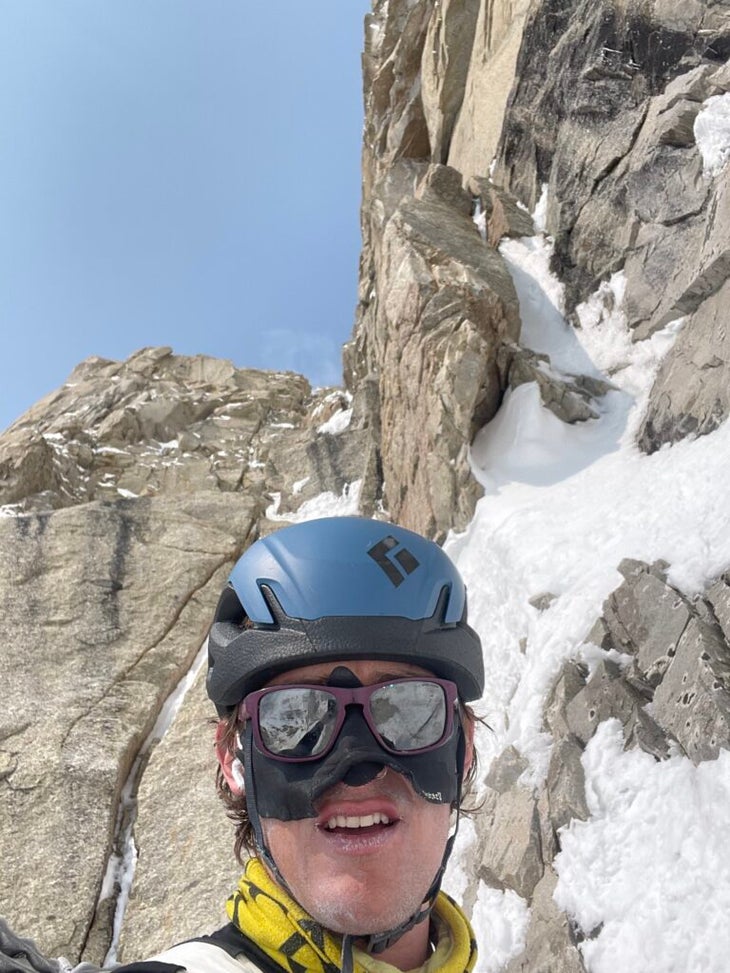
Just four months ago, Climbing Senior Editor Anthony Walsh reported on Miller’s historic solo of the Slovak Direct route (M6 WI 6 A2; 9,000ft) on Denali, which Miller said he thought “would be a ton of fun to climb alone.”
This past June, it took Miller three days to complete the ascent—during which, Miller assured us, he got plenty of sleep. With a five-day weather window, the Alaskan soloist opted to take a 19-hour nap at his first glacier bivy on Slovak Direct. He free soloed all but one pitch, which involved A2 cracks (freed at M8).
After Miller’s Slovak Direct solo, alpinist Colin Haley called his achievement “super badass.” Haley added that it was one of the greatest alpine-style solos ever completed in Alaska’s Central Range. And when the news was shared with Slovak Direct veteran Mark Twight, his reaction was simply, “Holy shit.”
Just a few months earlier, Miller had gone on a week-long soloing spree across, improbably, Patagonia and the Canadian Rockies. In January, he climbed Californiana (5.10c; 700m) on Cerro Chaltén, employing a mix of free soloing and rope soloing.
Then, Miller headed to Canada, where he soloed Virtual Reality (WI6), followed by one of Canada’s most infamous climbs: Reality Bath, ominously graded VIII in Canada for its WI5/6 difficulty and objective hazard. He told Walsh that what attracted him to Reality Bath was the route’s “lore,” built up over time by Twight, one of the first ascensionists.
Miller pulled off these three stout solos with a stripe of glitter on each cheek—a habit he’d adopted during a summer of yore involving alt rock, a girl, and partying. “If I was just going cragging, I probably wouldn’t wear glitter,” Miller explained to Walsh last January. “But it’s like a warrior putting makeup on before going into battle … you know you’re about to do something hard.”
When Miller wasn’t climbing, he worked as a crab fisher in Alaska and as a snow shoveler in Montana. Originally from Anchorage, Miller grew up climbing with his father and brother Dylan. He is also survived by a younger sister, Mia.
This is a developing story. We will update it as new information becomes available.
The post Bold Young Alpinist Balin Miller Dies in Yosemite appeared first on Climbing.
]]>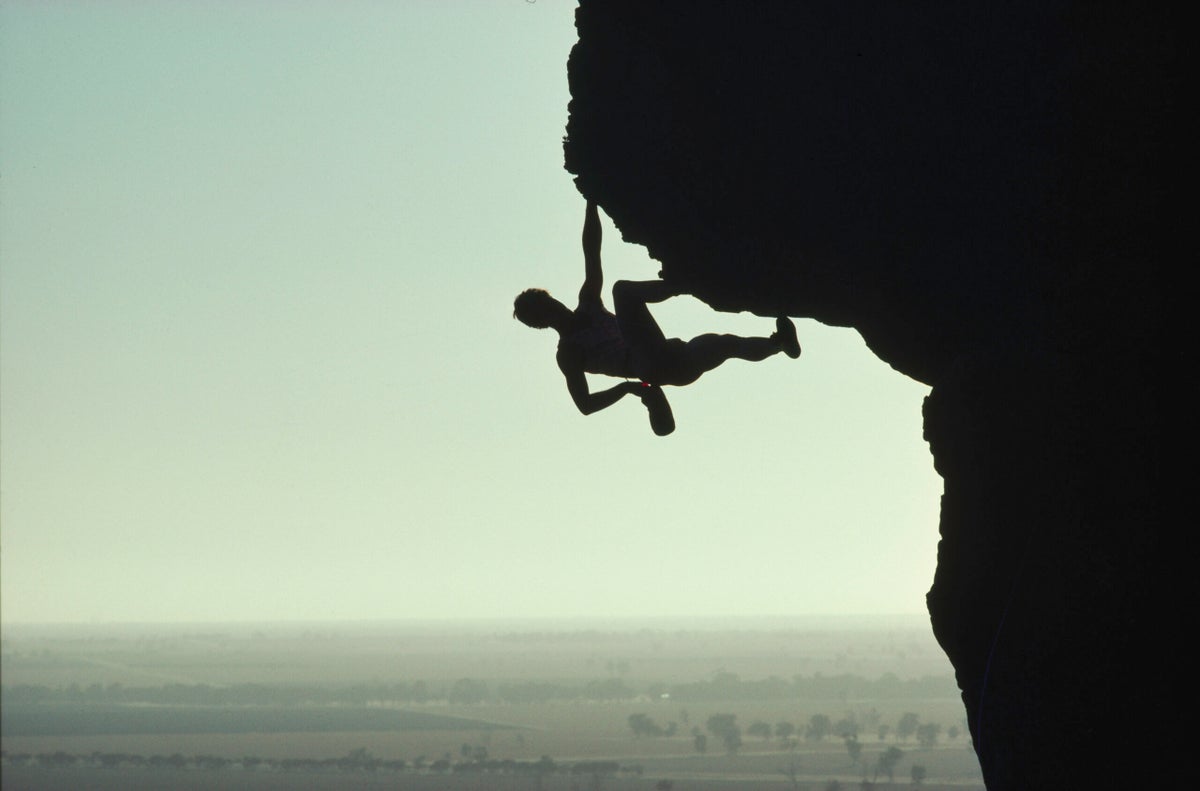
A quick detour into the etymology of the term—and how climbing language is still evolving
The post The Strange Story Behind Why We Call Ropeless Climbing “Free Soloing” appeared first on Climbing.
]]>
In 1945, at age 45, John Salathé took a Sierra Club rock climbing clinic at Hunter’s Hill, a beginner-friendly crag in the Bay Area. His guide climbed to the top of a pitch, anchored in, and pulled up the rope.
“Go ahead, John, climb freely!” the guide hollered down to Salathé. The guide couldn’t pull up the slack fast enough, marveling at the speed of this Swiss novice. But when Salathé arrived at the belay, he wasn’t tied into the rope. He had thought “climb freely” meant to climb ropeless.
“I learned this story when I got artifacts from John Salathé,” said Ken Yager, president of the Yosemite Climbing Association, which runs the Yosemite Climbing Museum. Yager relayed the historic tale when I asked him about the origins of the term “free soloing.” Apparently, this mid-century incident is how the term “free” came to reference both the style of climbing without aid, and the act of climbing ropeless.
“They should have figured out it was a problem then,” Yager reflected on the double meaning. “I’m sure it’s just a conglomeration of different terms. It is very difficult to explain to people the difference, even people with a general understanding of climbing.”
Aside from the secondary meaning incurred when Salathé misunderstood his Sierra Club instructor, “free climbing” means using only holds on the rock to move up a route. Conversely, “aid climbing” refers to leveraging gear placed in the rock to move upward. (Yager shared that climbers called this “artificial climbing” back in the day.)
But the story of Salathé only explains half of the term in question. The other half, “soloing,” means to climb without a partner (and thus without a belayer). One can also solo with a rope, belaying themselves—referred to as “rope soloing.” So how did these two words come together?
According to the Oxford English Dictionary, the first recorded use of the term “free solo” appeared in 1977 in the writings of John Gill. Perhaps best known as the father of bouldering, Gill also free soloed his way through the late 1950s and `60s. We reached out to Gill for insights but never got a response.
Whether Gill invented the term or was merely reflecting current vernacular, we may never know. But perhaps the phrase emerged like language often does—randomly and unpredictably, rather than intentionally. This might explain why so many climbers today find themselves correcting non-climbers on what “free solo” means.
Neither “free” nor “solo” imply ropeless. In general, Yager said he is relatively fed up with the evolving linguistics of our sport. “I gave up when they threw in pinkpoint, redpoint, and all that stuff,” he laughed. “And trad—that was another one that I hated. That’s real climbing. There’s sport climbing and real climbing.”
Another term that has changed over time is “power point,” which refers to your main tie-in point to an anchor. Jason D. Martin, executive director of the American Alpine Institute, says that at some point, the term “power point” evolved to “master point.” But using this second-generation term has become uncomfortable for many who recognize its connotations of slavery. Leaders in many fields, from computer science to religion, have chosen to move away from using “master” to describe relationships, including those between objects.
Now, Martin wants climbing to retire the word, too. In every BIPOC program Martin has led, someone calls out the term “master point” as triggering. He’s starting his effort with the second edition of the American Mountain Guides Association Single Pitch Manual, which he’s co-authoring with Bob Gaines. “With the new textbook, we’re trying to change the language to ‘central point,’” Martin said. He estimates that it will take a decade before “central point” becomes the predominant term.
So if our climbing lingo evolves—as it always does—could we come up with a better term for ropeless climbing than “free soloing”? Literal, albeit dry, alternatives make more sense in the binary with rope soloing, including “unroped soloing” or “ropeless soloing.” Gaines suggested “ropeless free climbing.”
We might also take inspiration from France, where, according to prolific free soloist Alain Robert, climbing without a rope is termed solo intégral. The word intégral translates to “whole” or “complete,” as in totally solo or full solo. “At the end of the day, solo intégral is a lot more meaningful,” Robert explained. “The meaning is deeper and more explicit.”
The path of least resistance might just be to remove “free” and call it “soloing”—something many climbers already do conversationally. It’s accurate, makes sense in contrast with “rope soloing,” and conjures up an image of a climber alone on the rock—no partner, no gear, no rope.
The post The Strange Story Behind Why We Call Ropeless Climbing “Free Soloing” appeared first on Climbing.
]]>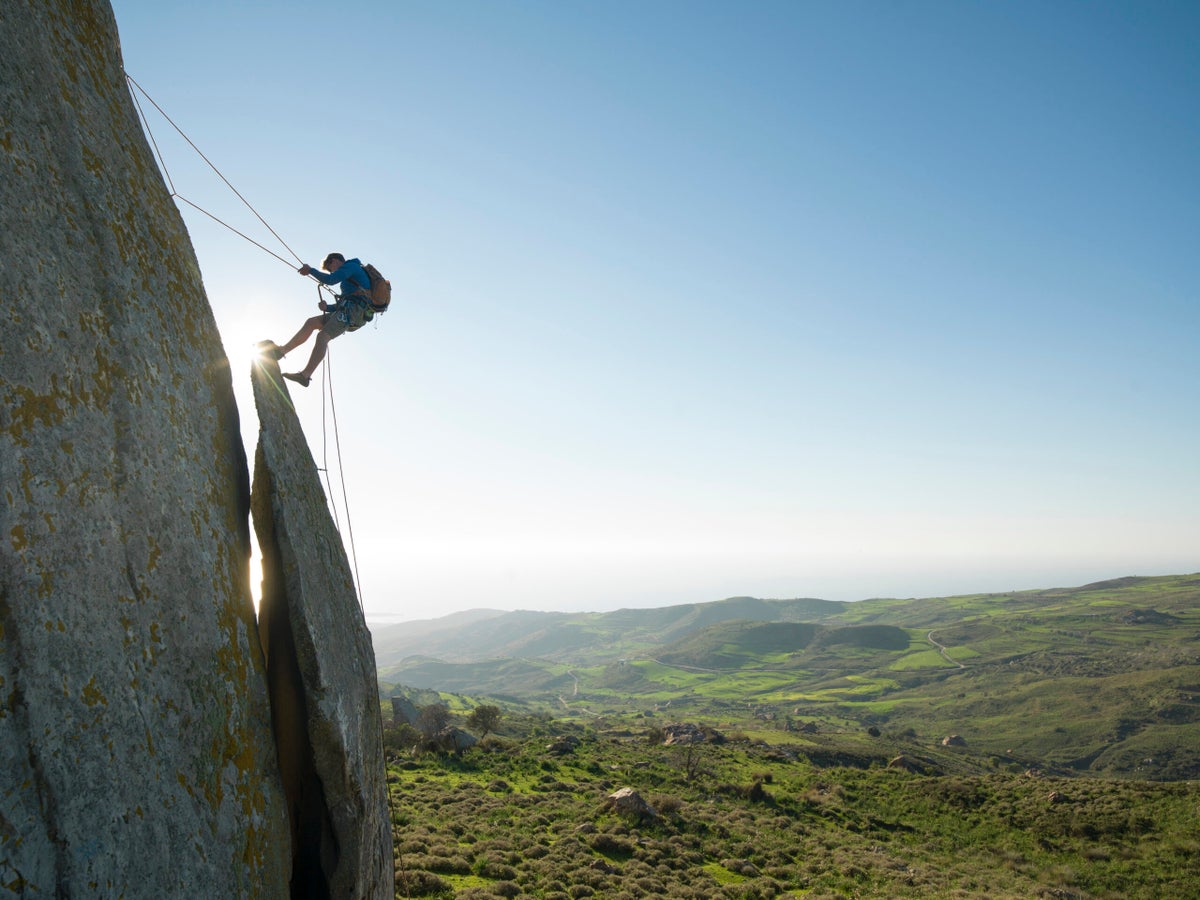
From the state with the most fatalities, to the most common injury, preview some fast stats from the 2025 ‘Accidents in North American Climbing’
The post 9 Interesting Stats From 210 Climbing Accidents Last Year appeared first on Climbing.
]]>
Nothing teaches you a lesson like making a mistake yourself. The next best thing, however, is reading about other climbers’ mistakes in Accidents in North American Climbing (ANAC), published annually by the American Alpine Club. Learning from the accidents of others is a valuable way to improve your systems, dial your safety practices, and avoid complacency.
Before diving into the accidents, the 2025 ANAC opens with valuable insights on making your next rappel safer. But the most fascinating story this year investigates the role of human error in accidents. Climber and researcher Dr. Valerie Karr searched for themes in ANACs from 2005 through 2024. In her surveying, she found the six most common ways human error leads to accidents. Climbing will also be publishing a story specifically related to Dr. Karr’s insights soon.
ANAC 2025 (Volume 13, No. 3, Issue 78) is now available for pre-order, with the official release in early October. Here are nine surprising takeaways from the report.
1. 2024 and 2023 were the highest fatality years since the 1950s in the United States.
Since the American Alpine Club first started soliciting accident reports some 75 years ago, between 10 and 43 climber deaths occurred per year. From 2022 to 2023, fatalities in the U.S. surged by 22% to a total of 51. In 2024, 49 total fatalities occurred in the U.S., the second highest number since the AAC started keeping records.
It was also a high year for climber injuries in the U.S., with 174 reported injuries, 15% more than 2023. This was also the second highest injury count in the U.S. since AAC records begin. Total accidents were also high, with 190 reported in the U.S., the second highest number since the 1950s.
While the reported incident volume is always higher in the U.S., our neighbors to the north had a more moderate year in 2024. The 2025 ANAC documents 20 total accidents from Canada (down 35% from 2023), 25 injuries (down 32%), and nine fatalities (up 23%) in 2024.
2. Before you blame “gym to crag” on rising incident rates, consider who got into more accidents.
Some climbers like to grumble about novice climbers who don’t know what they’re doing, whether they’re new to the sport or making the transition from gym to crag. But in 2024, expert climbers sustained far more accidents than beginners. While the experience level of a large volume of climbers involved in accidents remains unknown, we do know that 33 expert climbers got into accidents last year, while only six beginners and two intermediate climbers had accidents.
3. By far, California saw the most accidents and injuries reported in 2024.
ANAC uses geographic districts that include Canadian provinces (e.g., Alberta), Canadian territories (e.g. the Yukon and Northwest), U.S. regions that group together states with lower data thresholds (e.g., the Southeast), and U.S. states that are major climbing destinations (e.g., Colorado).
Unsurprisingly, California gets its own geographic district—and sees a lot of action. In the last calendar year, climbers in California reported by far the most accidents and injuries of any geographic district. In 2024, 40 climbing accidents occurred in California, followed by Colorado (28) and Washington (26). Thirty-four of those accidents involved injuries; runner-up districts for injuries across North America include the U.S. Northeast (26), and the state of Washington (24).
This brings California’s total accident count since 1951 to 1,798—second only to Washington, which has 2,134 reported accidents in the books.
4. But California did not see the highest fatality rate of 2024.
In 2024, Washington and Colorado both experienced 11 fatalities, the most of any other district. California accidents led to 10 deaths. This brings both Washington and California to a total of 378 reported climbing fatalities since 1951. The Colorado climbing community has experienced 295 deaths to date.
5. More accidents struck on the ascent than the descent.
Rappelling gets a bad, well, rap. But of all the accidents reported across North America in 2024, 100 occurred while climbers were ascending. Compare that with 46 accidents sustained during the descent. This trend is on par with historical data. (Note that with 46 of the 210 accidents, it was unknown whether problems arose on the way up or down, and 11 accidents also occurred on neither the ascent or descent).
6. The most common injury of 2024? Lower extremity fractures.
Those pesky ledges, nasty ground falls, and more hazards of the hobby led to 30 lower extremity fractures among climbers last year. Historically, lower extremity fracture has ranked ninth in terms of most prevalent injury. But the AAC only began breaking out fractures by location in 2021, and fractures in general have dominated climber-related injuries since the records begin for this datapoint in 1984.
The next most common injuries were hypothermia (17 cases in 2024), and head injuries/traumatic brain injuries (16 incidents in 2024).
7. Alpine climbing involved more accidents than any other discipline.
As usual, alpine climbing/mountaineering led to more accidents than any other type of climbing.
In 2024, 71 accidents occurred on alpine-style climbs. The second most accident-prone discipline of 2024? Trad climbing, with 52 total accidents. Sport climbing comes in third, with 35 accidents last year. Other categories include ice/mixed climbing, big wall climbing, bouldering, toproping, free soloing, and ski mountaineering.
But before you make assumptions about alpine climbing or trad climbing being more dangerous than, say, ice climbing or free soloing, keep in mind that these aren’t accident rates, only accident totals. The higher accident volume might be indicative of the popularity of each discipline. While nine people had accidents free soloing or deep water soloing in 2024, for example, the accident rate might still be quite high considering how few people climb ropeless.
8. A lot of climbers got lost last year.
After falling while rock climbing, the second leading cause of accidents in 2024 was becoming lost or stranded. With a total of 31 accidents involving getting stuck or off track, this is a good reminder to us all to download a navigation app, bring along a satellite comms device, and tell someone where we’re going and when we expect to return. Oh, and brush up on those self-rescue skills!
9. Male climbers got in a lot more accidents than female climbers.
Last year—and historically—men experienced more accidents than women. While this may lead you to draw some conclusions, keep in mind that this data doesn’t take into account the total numbers of men vs. women climbing. That said, 134 accidents involving men, compared to 40 accidents involving women in 2024, represents a pretty big gender gap.
Whether it’s about who’s actually climbing—or something else—we also saw a similar trend in our 2024 Climbers We Lost. Among 38 fatalities in our community, only one person on our list was a woman.
The post 9 Interesting Stats From 210 Climbing Accidents Last Year appeared first on Climbing.
]]>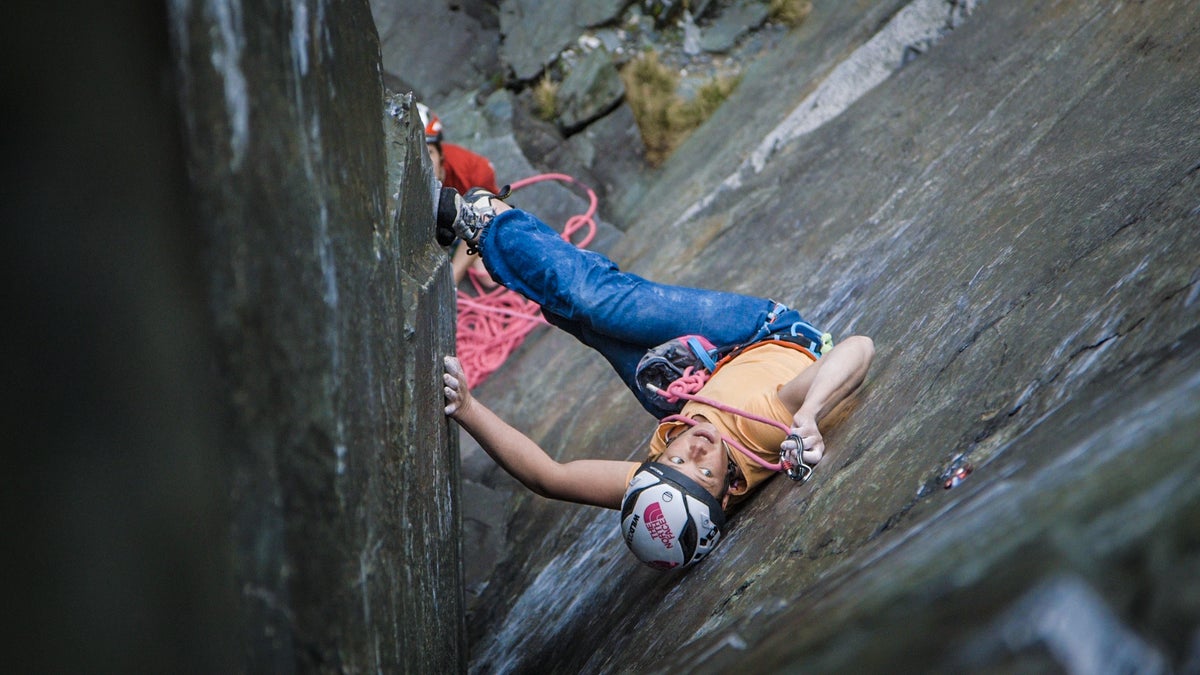
A new open letter from Sébastien Berthe, Sean Villanueva O'Driscoll, Katherine Choong, and more signees aims to keep fossil fuel-based sponsorships out of the sport.
The post Pro Climbers Urge IFSC and the Climbing Community to Swear Off Fossil Fuel Ties appeared first on Climbing.
]]>
As competitive climbers converge in Seoul for the IFSC World Championships this weekend, several pro climbers and organizations have signed an open letter written by Cool Down, also known as the Sport for Climate Action Network. The letter, “Climbers for a Fossil Free Declaration,” calls upon the International Federation of Sport Climbing (IFSC), national climbing federations, and the wider community to reject all sponsorships from fossil fuel companies.
By signing the letter, climbers promise to reject support from fossil fuel companies, as well as carbon-intensive industries, including aviation and conventional automakers. Signees also pledge to use their platform to advocate for positive climate action.
This initiative follows the IFSC’s controversial partnership last year with Saudi Arabia for the NEOM Masters. Critics swiftly condemned the deal as a concerning example of “sportswashing” by a petrostate known for obstructing climate action, according to the independent scientific Climate Action Tracker. The open letter says the event represents the “wrong direction” for the sport’s sponsorship landscape.

“We urge the climbing community, event organizers, and national and international federations to take a stand by declaring a ban on high-carbon advertising,” the letter states. “As climbing grows, we must ensure our sponsors align with our values—protecting the future of the planet over profit.”
Climbers aren’t the only ones rallying their sport to do better. In early August, Cool Down announced a similar letter directed toward athletes and organizations in all sports. This cross-sport declaration makes the same demands as the open letter climbers have written: accept no fossil fuel-based sponsorships and use your platform for climate advocacy.
While climbers can also sign the Fossil Free Declaration, the climbing-specific open letter is a way to raise the profile of this initiative within the climbing community. So far, the letter has garnered 28 signatures, including Sébastien Berthe, Kilian Jornet Burgada, Lattice Training, Ecopoint Climbing, Sean Villanueva O’Driscoll, and Katherine Choong.
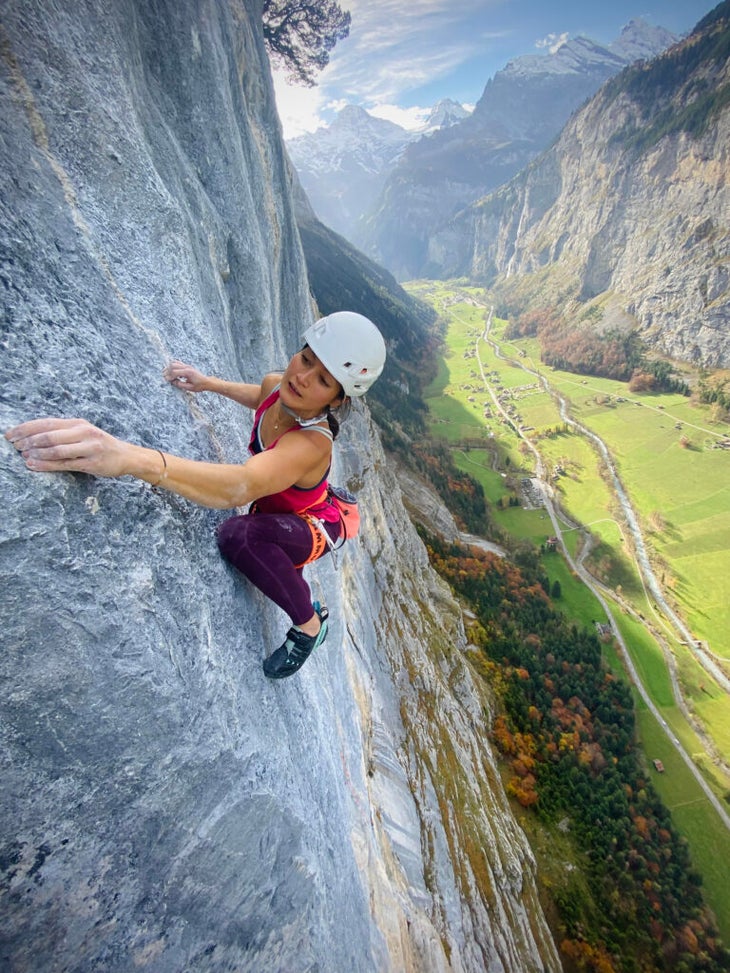
“I signed the declaration because as athletes, we have a responsibility to push for a future where sport is not tied to industries fueling the climate crisis,” Choong shared with Climbing. “Climbing teaches respect for the natural world, and I believe our sport should reflect that by ending partnerships with high-carbon sponsors.”
The letter makes it clear that this isn’t just about doing the right thing—climate change also critically imperils the sport with increased hazards. It states: “As glaciers retreat, rockfalls become more frequent, and mountain environments grow more dangerous, climbing faces an existential threat from the very forces that seek to profit from its destruction.”
Liam Killeen, a climber and campaigner with the Cool Down Network and Badvertising, helped write and circulate the climbing-specific open letter. He told Climbing that the strong environmental advocacy among many professional climbers sparked this initiative. The NEOM Games, flagged by climbers James Pearson and Caro Ciavaldini (pictured climbing an E8/5.13b route in this article’s lead image) as a concerning case of “sportswashing,” served as the specific catalyst.

“As lovers of the mountains and nature, it’s obvious why we would want to sign the open letter,” Pearson and Ciavaldini shared. “While it’s tempting to chase after the financial support these sorts of new, big budget partnerships might bring, it’s important to stay in touch with your base values, and think about what impact short-term gains like these may have on future generations.”
Rather than setting a specific goal for the number of signees, Killeen explained that he hopes the open letter will strengthen Cool Down’s position in conversations with key stakeholders such as the IFSC, the British Mountaineering Council, and more organizations. More broadly, Killeen said he hopes that the letter “raises awareness in the climbing community about the risk of harmful sponsors moving into the space as the sport continues to grow.”
While climbing has remained relatively insulated from fossil fuel sponsorship compared to sports like football or cycling, its rapid ascent as an Olympic sport in 2020 makes it an increasingly attractive potential investment for polluting companies. The declaration positions climbing to set a powerful example, demonstrating that sport can grow and thrive without the backing of companies that actively exacerbate the climate crisis. The message is clear: The future of climbing—and the planet—depends on a commitment to a fossil-free future.
The “Climbers for a Fossil Free Declaration” open letter is not only an initiative for pro climbers and organizations. Any interested climber can sign here.
The post Pro Climbers Urge IFSC and the Climbing Community to Swear Off Fossil Fuel Ties appeared first on Climbing.
]]>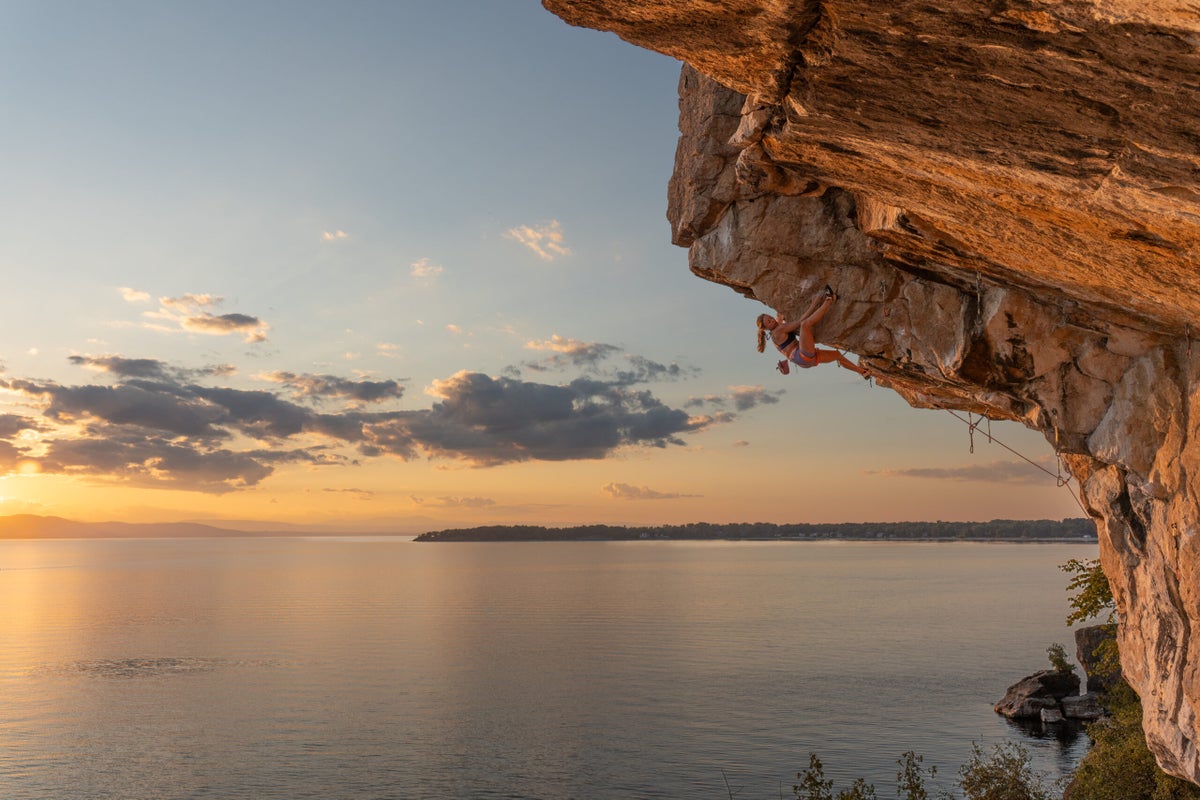
At 5.14d, her new route, ‘Mad Lib,’ is the hardest grade established by a woman in North America since Beth Rodden’s ‘Meltdown.’
The post Michaela Kiersch Just Made History With This First Ascent appeared first on Climbing.
]]>
In between flower-filled strolls and lakeside reading sessions, Michaela Kiersch pulled off the hardest ever first ascent of a sport route by a woman in North America. On September 11, Kiersch freed an open project at Vermont’s Lone Rock Point, dubbing it Mad Lib (5.14d/9a).
“There are existing 5.14s at the wall, and this line is an obvious link through the hardest sections of the cliff,” Kiersch told Climbing.
Mad Lib represents the hardest FA on the continent by a female climber since Beth Rodden’s 2008 takedown of Meltdown (5.14c) in Yosemite. While Kiersch’s FA bests Rodden’s in terms of the grade itself, Meltdown could be considered harder than Mad Lib because it’s a trad climb. Beyond North America, the hardest first ascent ever by a woman remains Sweet Neuf (5.15a/9a+) in Pierrot, France, established by Belgian climber Anak Verhoeven in 2017.
As usual, Kiersch pulled off this historic achievement with casual aplomb. The first woman in the world to climb both 5.15 and V15 also happens to be remarkably relatable. Impressively, this pro climber lives a double life as an occupational therapist. She loves solo travel (case in point: her trip to Switzerland, where she sent Dreamtime, V15). And between cutting-edge ascents, she shares no-filter selfies, carousels mocking Internet trolls, and cinematic homages to her favorite beverage. (No, not AG1 Greens shakes or athletic performance drinks. Just good ol’ Dale’s Pale Ales, one of her sponsors).
We caught up with this Salt Lake City-based climber to find out how she pulled off her latest feat, what else she got into in New England, and where she’s headed next.
Inside Michaela Kiersch’s 5.14d first ascent
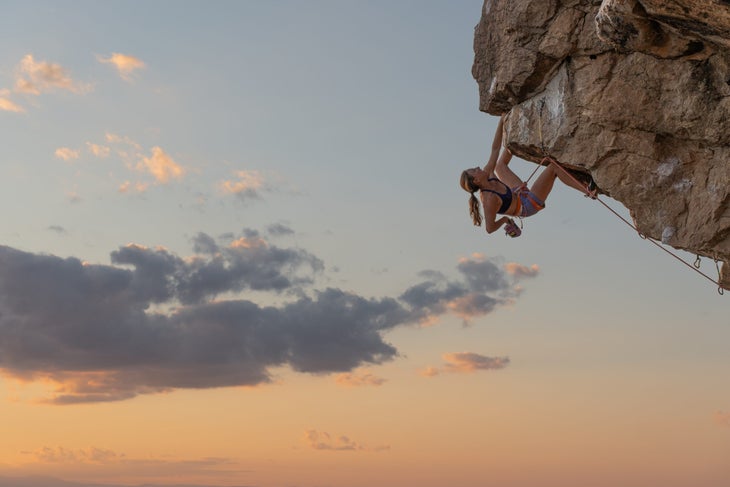
“It’s incredible to feel like I can contribute back to the climbing community in this way and start to carve my own path with regard to hard first ascents,” Kiersch says.
Her newest contribution, Mad Lib, marks Kiersch’s second first ascent. She bagged her first first ascent in Kentucky’s Red River Gorge with Goldilocks, which she called 5.14b, but Alex Megos later upgraded to 5.14c. Mad Lib begins on a previously unsent, five-bolt start equipped by Jesse Franklin—local legend Pete Clark bolted the rest of the line. The route then merges with an existing route known as King Tubby (5.14a), at the top of which Kiersch says a “taxing kneebar rest” awaits. After the rest, powerful and dynamic moves lead up “an extremely beautiful arête,” coinciding with the top of Terror Wolf (5.13c).
The fact that Mad Lib includes sections of several other routes inspired its name. “When talking with local Peter Kamitses, the suggested name for this route grew so long and nonsensical that it sounded like a Mad Lib word game,” Kiersch explains. “It was a bonus that this coincided with the hip hop theme on some of the other routes.” Nearby route names like Bring Da Ruckus, Tiger Style, and Ghostface Drilla pay homage to Wu-Tang Clan. In addition to hinting at the word salad of a conglomerate route, Mad Lib alludes to a producer who’s collaborated with rapper MF Doom.
See where Kiersch’s route Mad Lib is located
Mad Lib rises 80 feet tall, but Kiersch says it “climbs much longer” due to its steepness. She spent six days working the route. On day five, she finally linked up the start. All in all, she estimates that she put down between 20 and 30 burns before redpointing it around 9 a.m. on September 11.
The hardest section for Kiersch consisted of “a hard deadpoint to a pinch, followed by a barn door and karate kick.” Alternate beta included turning the pinch into a full crimp, then launching a deadpoint to a sloper. “The movement is stellar and unique!” Kiersch says of the crux moves.
Mad Lib is located on a limestone cliff known as Lone Rock Point hanging over Lake Champlain. “It’s pretty special to find limestone sport routes on the East Coast, and the setting is just surreal,” Kiersch says of why she decided to check out this crag. Her September trip was only her second time in Vermont; when she visited for the first time last February, she “fell completely in love with the climbing community and area.”
Plus, a 5.14c FFA for good measure
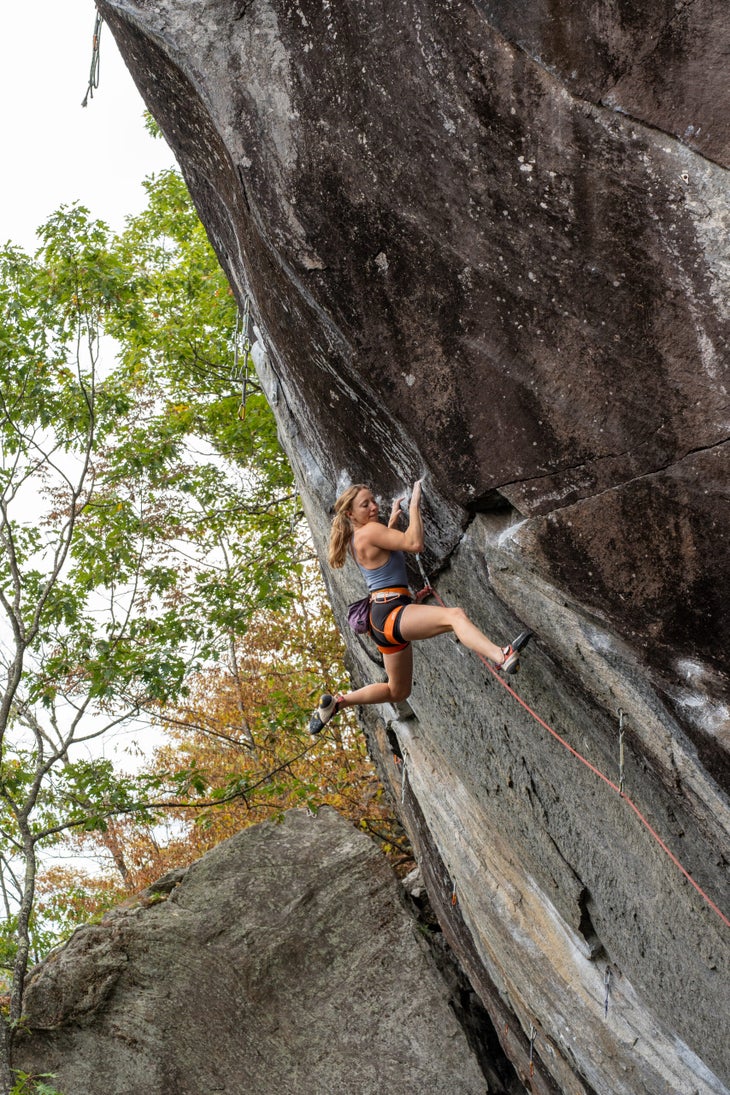
“Hardest bolted first ascent in North America by a woman” isn’t the only record Kiersch walked away with from her New England trip. Just two days after she sent Mad Lib, she nabbed the first female ascent of Livin’ Astroglide (5.14c) at Waimea wall in Rumney, New Hampshire.
Livin’ Astroglide follows a black arête, leading to a shared crux with Jaws II and China Beach up top. “With crimps, heel hooks, and pure resistance and recovery climbing, it suited me extremely well,” Kiersch says of the route.
Rumney is actually what first sparked Kiersch’s desire to plan a New England climbing trip. “I’ve always been inspired by the Dosage [a Reel Rock film series] in Rumney,” she says. Then a good friend—and Vermont local—clued her into Lone Rock Point and the open projects there. “After seeing one photo, I was completely sold,” she says.
During her two weeks on the East Coast, Kiersch also spent some time working on Jaws II. This 5.15a route has yet to see a female ascent. She didn’t manage to send, but she noted that she set herself “up well for a return trip.”
But for now, Kiersch’s travels will take her to Europe, where she’ll spend most of the fall pursuing “something hard.” What exactly? “I am keeping my plans loose to allow for weather and psych to guide me,” she says.
The post Michaela Kiersch Just Made History With This First Ascent appeared first on Climbing.
]]>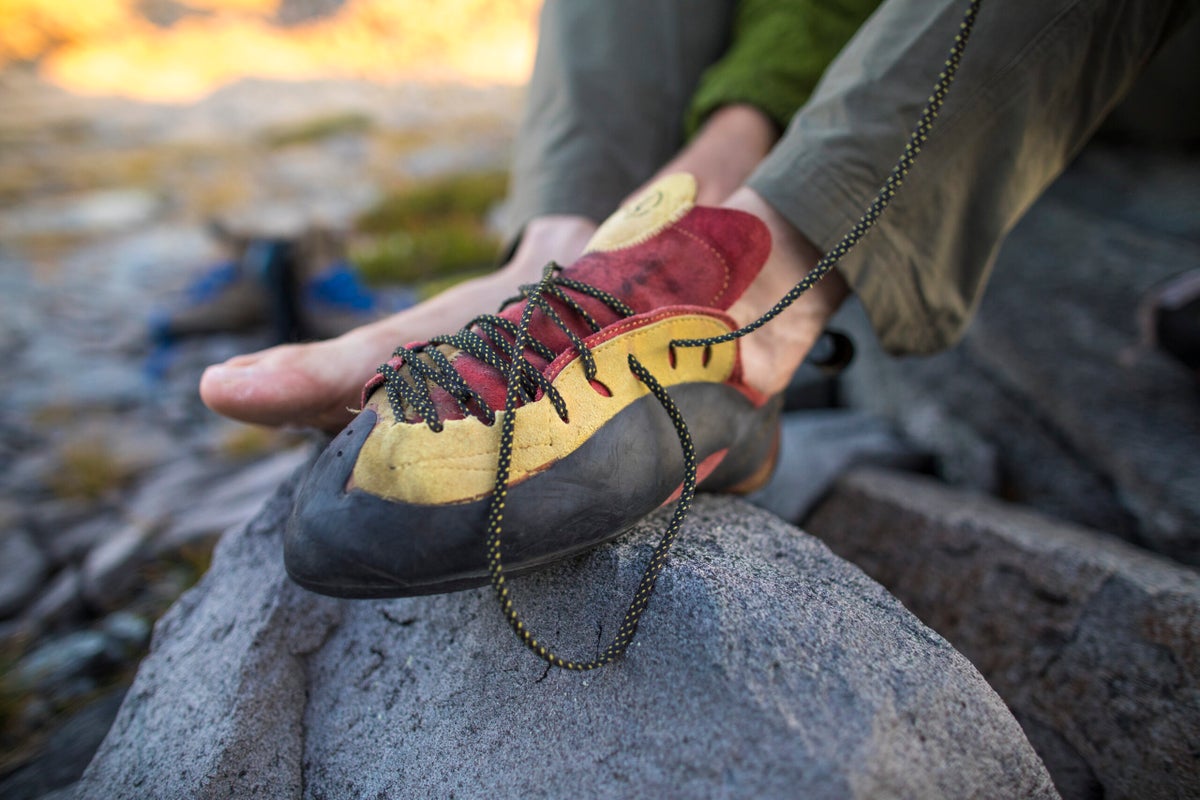
Proven strategies for preventing and removing odors from your shoes
The post Your Partner Thinks Your Climbing Shoes Stink. Here Are 7 Ways to Fix That. appeared first on Climbing.
]]>
Everyone knows that smelly climbing shoes are a surefire way to stink up your tent and scare away prospective climbing partners. Even the dirtiest dirtbags don’t want their feet to reek of the aged cheese Céüse climbers house between burns.
Unfortunately, stinky shoes are an all too common problem among climbers. A couple culprits? An intentionally tight fit and durable design that’s incompatible with breathability. It also doesn’t help that most climbers opt out of socks while climbing.
There are three stages when it comes to fighting foul odors in climbing shoes:
- Prevention: Don’t let your shoes get smelly in the first place.
- Removal: Get rid of odors already embedded in your shoes—for good.
- Cover-up: Mask the foulness when you’re in a pinch and don’t want to torment your belayer.
How to prevent stinky climbing shoes in the first place
Start climbing with clean, dry feet
Don’t set yourself up for failure by putting dirty, sweaty, or already smelly feet into climbing shoes. Before you start climbing, clean and dry your feet. If you can’t wash your feet before a climbing session, bring some wipes along in your pack. For a more sustainable option, try bringing a couple reusable wipes or cloths and dousing them with a bit of water and/or a couple drops of essential oils and give your feet a wipe down.
If you’re particularly prone to foot sweat and odors, this can also be an effective strategy on longer multi-pitch routes or big walls. Clean off your feet—and air them out—between pitches! One or two wipes adds minimal weight and bulk in a pack.
Let your shoes air out in between sessions
Storing your shoes in an enclosed pack or bag lets sweat, bacteria, and smells fester. The solution? Air your shoes out whenever you’re not climbing. As soon as you can, remove your shoes from your pack or bag and store them in a well-ventilated area. Hint: The trunk of your car or a small closet is not a well ventilated-area. If possible, hang them up to dry with a carabiner on a hook in a mud room, open gear closet, covered porch, or other airy spot.
Surrender your ego and wear socks
One of the reasons climbing shoes become so notoriously rank is that there’s no barrier between your sweaty foot and the shoe. While many climbers would rather give off heinous stenches than be caught wearing socks with climbing shoes, socks will help absorb sweat and prevent smells from developing. In fact, this nine-year-old, who recently became the youngest to send 5.14b (in socks), refuses to climb without socks. If you go this route, choose ultra-thin socks that won’t interfere with fit or performance for most climbers. Competitive, high-level, or dedicated slab climbers, however, might feel otherwise.
How to remove odors from your climbing shoes
Powder your shoes
When you air out those shoes, sprinkle some baking soda over the soles, shake them up, and let that sodium bicarbonate sit overnight—or until your next session. Baking soda is absorbent and can help neutralize those send-induced smells.
If baking soda isn’t cutting it, try On Your Toes foot powder, which promises to banish the funk for up to six months. Though if you’re really struggling with shoe odors, you might powder your shoes once a month, every few sessions, or when you notice the smell returning.
Put a banana in your shoes
Not an actual banana, but a boot banana. Co-designed by a climbing instructor, these moisture-absorbing shoe inserts soak up sweat and wipe out odors with a mix of minerals, salts, and essential oils. Also, like actual bananas, they turn brown when they’re reaching the end of their lifespan (this means it’s time to grab a new pair). Stick them in your climbing shoes after each session to soak up any unsavory smells.
Try vinegar
If powders and inserts have not quelled the smell, it’s time to introduce some acid to kill any pesky bacteria. Mix equal parts water and distilled white vinegar. Then use this solution to spray your shoes. Let it sit for a few hours before rinsing and air-drying. For a more aggressive intervention, scrub the shoes with this vinegar solution and a cleaning brush or microfiber cloth—or soak the shoes in a water-vinegar solution. While some have also resorted to hydrogen peroxide to banish bacteria, hydrogen peroxide can be corrosive, so it’s less than ideal, as it could damage your shoe’s materials.
How to mask stinky climbing shoes
Apply essential oils
Let’s say you accidentally left your shoes in your pack and are now about to go on a climbing date. Or you are heading to the crag in a couple hours and don’t have time for prevention or odor removal measures. If you need a quick cover-up for those stinky shoes, try spritzing some essential oils into the shoe. Lemon or lavender are always pleasant. Tea tree oil, while pungent, will likely be the most effective in obscuring stenches. You can mix essential oils with water and spray on your shoes, or buy a pre-diluted essential oil spray designed specifically for shoes, like this one.
What not to do to make your shoes smell better
There are some things you should never resort to when it comes to fighting the stink, no matter how bad those shoes reek. In your attempt to air out your shoes, never leave them out in the sun. While short spells under UV rays at the crag are fine, storing them under the sun or leaving them in sunny spots for extended periods can damage your shoes.
Another shoe taboo? Putting your shoes in the washing machine. Scarpa cautions that you should never put climbing shoes in the washing machine, because it can cause damage to shoe materials. Instead, wash your shoes by hand.
When all else fails …
Lastly, if after all of these measures your shoes still smell, consider recycling them instead of chucking them in the trash. You can recycle your shoes through the GotSneakers shoe recycling program, or order a Trashie Bag and throw your shoes in with any old clothes you no longer want.
And if you’re ready to start a clean slate when it comes to climbing shoes, check out some of our shoe picks and don’t forget to follow our odor prevention tips to keep them fresh.
The post Your Partner Thinks Your Climbing Shoes Stink. Here Are 7 Ways to Fix That. appeared first on Climbing.
]]>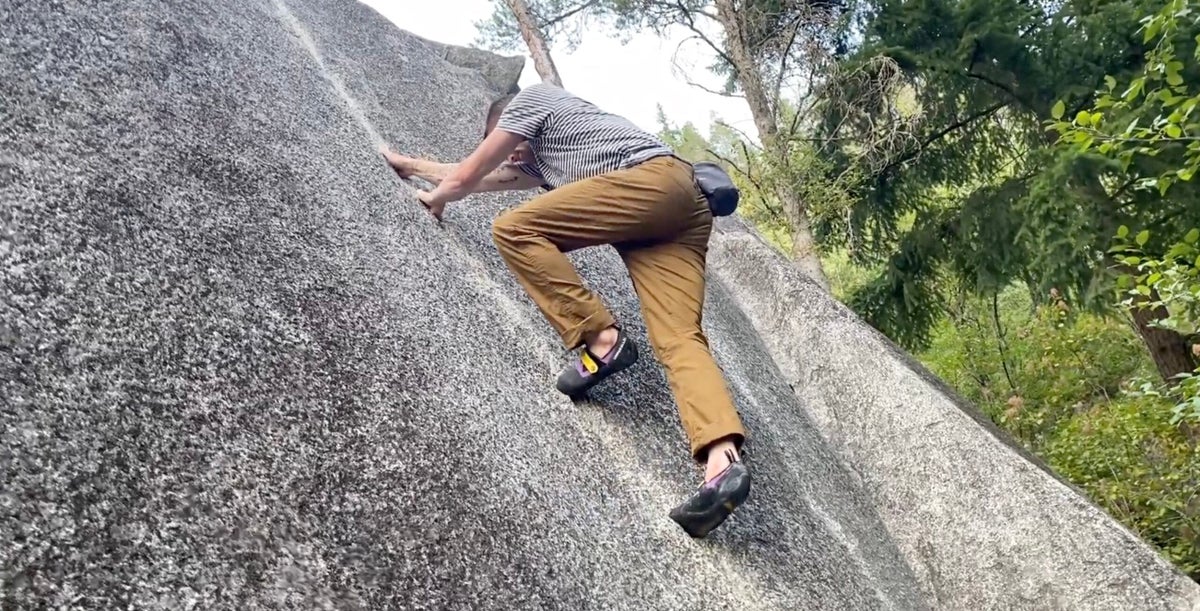
The 11 best climbing pants for sport, bouldering, trad, the gym, and more—plus our pant pick for all-around climbing.
The post We Tested 42 Different Climbing Pants. These Pairs Came Out on Top. appeared first on Climbing.
]]>
Take a look around any crag and you’ll likely see a wide variety of climbing pants. Sure, there are plenty of climbers wearing purpose-built pants with four-way stretch and techy features. But we also see people climbing in leggings, billowy linen, the occasional Lycra tight, Carhartts, and denim (the horror!). While there are many pants that you can make work for climbing, if you’re in search of the best climbing pants, you’re in the right place. We put dozens of pairs to the test, from technical bottoms and department store leggings to burly workwear.
To help guide you toward the best pair, we identified the top all-around rock pants for anyone who doesn’t want to invest in multiple pairs. We also picked top pairs for sport climbing, bouldering, the gym, and trad/multi-pitch/alpine.
Searching for climbing pants for women? While we offer recommendations for both men and women here, we also created a separate women’s-specific guide to the best pants with more detail and additional recommendations.
The post We Tested 42 Different Climbing Pants. These Pairs Came Out on Top. appeared first on Climbing.
]]>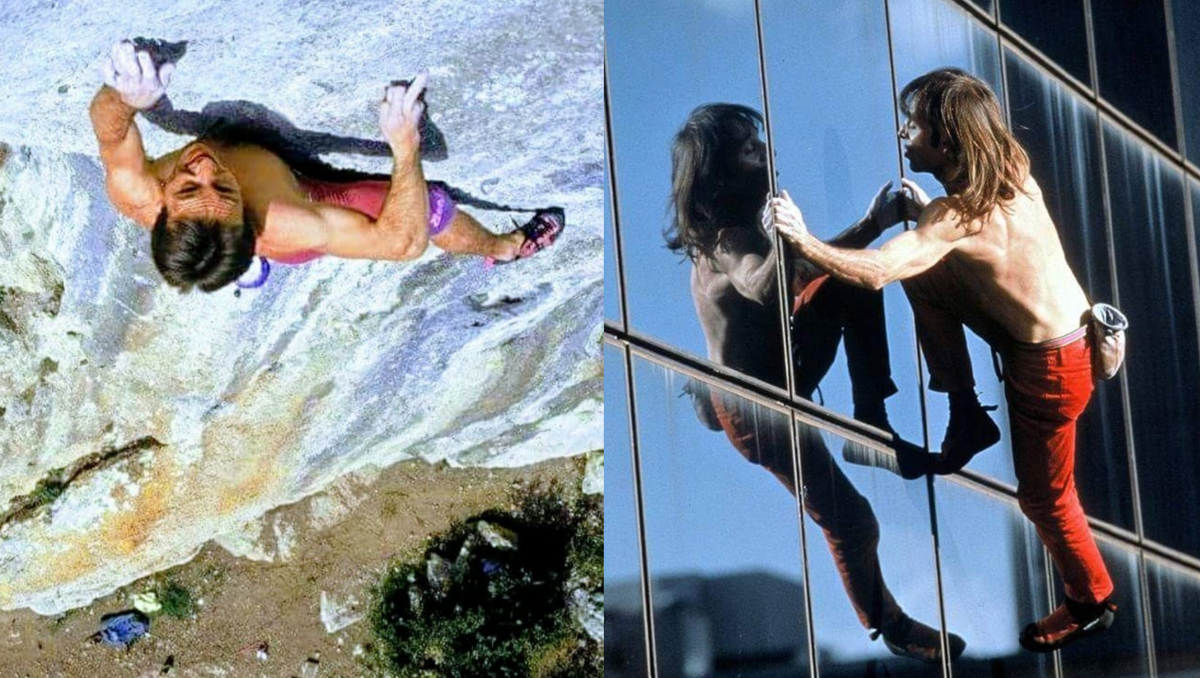
In a new biography on the French free soloist, Alex Honnold and Alexander Huber salute his pre-skyscraper record on rock. But how does Robert’s limestone heyday reconcile with his “crazy guy” reputation?
The post The French Spiderman Reflects on Free Soloing, Death, and Quantum Physics appeared first on Climbing.
]]>
Alain Robert is worried the world has forgotten what happened before the internet. This may seem a bit strange, since he has become a fixture of climbing’s corner of the internet, and might be the most Instagram-savvy 63-year-old that I can think of.
But before he learned how to make a reel, before he climbed the Citicorps skyscraper in Chicago, and before he was arrested some 170 times topping out on buildings, Robert rolled the dice on rock. In a series of voice memos and screenshots delivered over WhatsApp, Robert made this abundantly clear to me.
I had originally reached out to the French free soloist after a new biography about him came out with forewords by Alex Honnold and Alexander Huber. At the time, I was in the middle of his first memoir: With Bare Hands: The Story of the Human Spider (2008). The other reason I contacted Robert is that little has been written about him here at Climbing. Just a book excerpt and a news story, 17 years old. A rollicking profile by Climbing contributor Owen Clarke did emerge recently in Summit Journal. The profile touched on Robert’s pre-internet legacy—and left me with an unsettled image of him as a conspiracy theory-slinging, Champagne-guzzling “crazy guy.”
The biography of Robert released last winter paints a different picture. Published by Catherine Destiville’s press, Éditions du Mont-Blanc, Spider-Man, Alain Robert, Free and Unattached is only available in French (and in Europe). Robert sent me English versions of Honnold’s and Huber’s remarks.
“I’ve always felt a certain connection to Alain Robert,” Honnold wrote. “The style and difficulty of the routes that he has free soloed on rock is truly unmatched,” Honnold specifically cited his free solo of La Nuit du Lezard (5.13c/8a). “I have nothing but respect for all that Alain has accomplished in his nearly 50 years of climbing.” He goes on to reflect that while sometimes Robert leans into the spectacle and is “derided” as a stuntsman, his climbing skills remain “unmatched.”
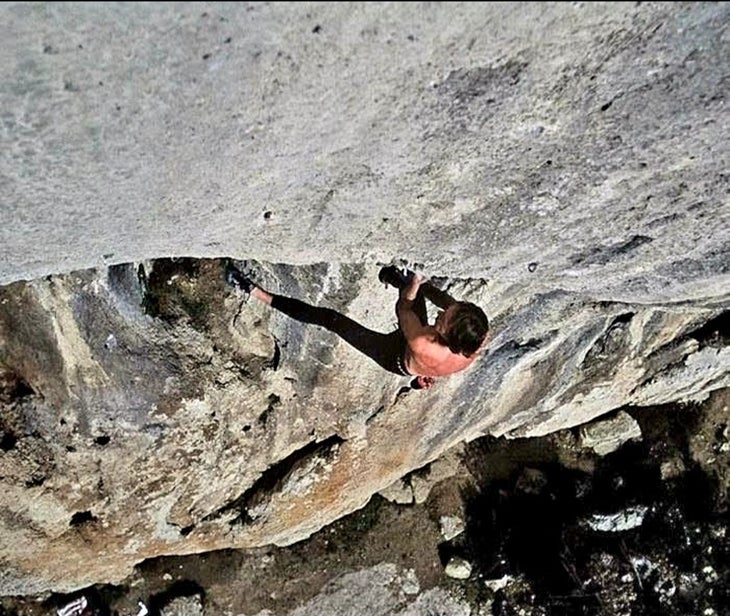
After declaring free soloing as the purest form of climbing, Alexander Huber wrote: “Alain Robert is far more than just a crazy climber who stood atop of the most spectacular buildings. Beyond that he is a pioneer who opened a new level in the art of free soloing.”
As this book reflects on Robert’s legacy, we are also watching the discipline of free soloing enter a different realm—and not the one Huber speaks about. As the democratization of media unfolds on social platforms, free soloists like Robert have an even greater opportunity to attract an audience with their shock-factor, can’t-look-away feats of climbing unroped. We recently tackled this subject at Climbing with a story on Lincoln Knowles, another soloist who monetizes his ropeless exploits, but through crowdfunding. Depending on who you ask, there might be vast or nuanced differences between Robert’s and Knowles’s soloing “content” and its potential harms.
So, on the one hand, there is Robert’s eccentric persona, rooted in recklessness, spiced rum (a long-time sponsor), and a swaggering sense of style that includes red leather and cowboy boots that he occasionally uses as climbing shoes. On the other hand, there are his staggering accomplishments, many of which seem to have indeed fallen to the wayside in our collective memory.
Before he donned a Spiderman suit up a Paris tower or went viral on social media, Robert made the first and second free solo ascents of a 5.13d. (At the time, the hardest grade yet climbed was 5.14b.) Many of his free solos on rock remain unrepeated. And while his urban “escalations” are indeed spectacles, the technical skill underlying his prolific success cannot be understated, with estimated grades up to 5.12d, according to Honnold.
Could free soloing shirtless for a photographer in the Verdon and taking selfies while climbing a skyscraper in a neon bodysuit be more similar than we think? Maybe it simply boils down to optics.
After weeks of back and forth on WhatsApp, I finally spoke with Robert from his home in Bali on the eve of his 63rd birthday. I wanted to find out if he was the outlaw Clarke made him out to be, with no intentions of backing off. Or could he finally be ready to dial it back as a senior soloist—with seven grandchildren—fraught with disabilities resulting from several groundfalls?

A conversation with Alain Robert
This interview has been lightly edited for clarity and brevity.
Climbing: What part of Bali do you live in?
Alain Robert: I am in Balangan, quite close to Ulu. Maybe in the future, I’ll live four months in France in Verdon and eight months in Bali. It’s a good combination. I can still do rock climbing on a daily basis. The thing is, sometimes I’m a little afraid about myself, because I know that if I live four months in Verdon, I’ll be climbing free solo four months in Verdon every day—every single day.
Climbing: So maybe it’s better for you to stay in Bali.
Robert: Well, I went through that—meaning from the end of the `80s all the way until the mid-`90s, I was free soloing hard grades on a daily basis. But that was a very interesting period of time because when you are free soloing, you are alone. There was no media, no internet, no GoPros. Once in a while, there was a professional photographer or TV station following me, but there wasn’t much and I loved it this way.
Climbing: It sounds like you miss those simpler days. When was the last time you climbed on rock?
Robert: Oh, that was two years ago. I had stopped rock climbing for 22 years and then I came back to Verdon to do some free soloing onsight. Of course, my level was totally different. But what was interesting is that at the end of the day, my spirit hasn’t changed. I love pushing the envelope. Once upon a time, I used to be a good and strong rock climber. Nowadays, I am really an old guy. I’ll be turning 63 tomorrow. I see the new generation—there is this little girl who did 8c a few days ago. She’s like 9 years old. I have been free soloing for 50 years and I have seen a tremendous evolution in climbing.
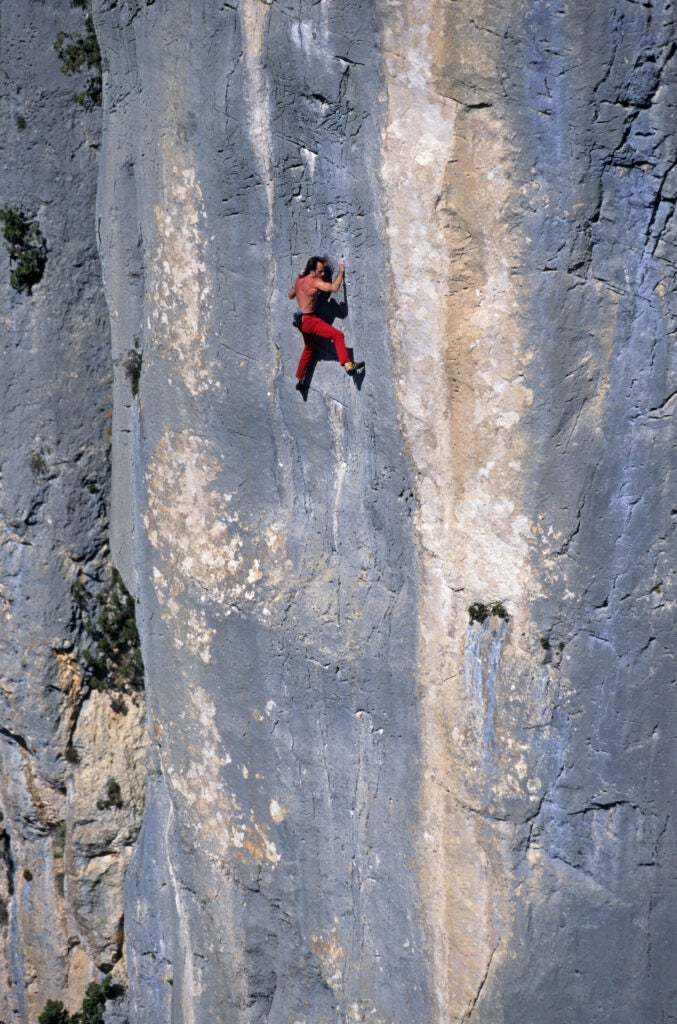
Climbing: Going back to your time in the Verdon, I find it a little paradoxical that your three major climbing accidents didn’t come from pushing your limits free soloing, but from gear errors and a slip while guiding. How did each of those accidents change your perspective on climbing?
Robert: It goes back to the very beginning, before I even started climbing. I was afraid of everything as a young boy. I was shy and lacking self-confidence. Then I had a dream. I wanted to become courageous like Zorro, like Robin Hood. One day I saw a movie called The Mountain about a plane that crashed near the top of Mount Blanc. Two mountaineering brothers climb the mountain to seek survivors. That really inspired me. I decided, wow, one day I hope that I will be like those guys, climbing mountains, climbing on rocks.
So I fought very hard with myself, with this little boy, afraid of falling, afraid of dying, afraid of everything. That’s the reason why when people ask me about a few accidents, I say it has never changed my love of and my motivation for climbing.
Climbing: You must have a really unshakeable headspace to have survived those accidents and continued free soloing.
Robert: The thing is, I have deep faith in myself. You cannot say, “Oh, I’m just going to train hard to get physically stronger.” It doesn’t work this way. This is what Alex [Honnold] was saying about Pol Pot [a 5.13a slab route that Roberts considers the hardest free solo he’s ever done].
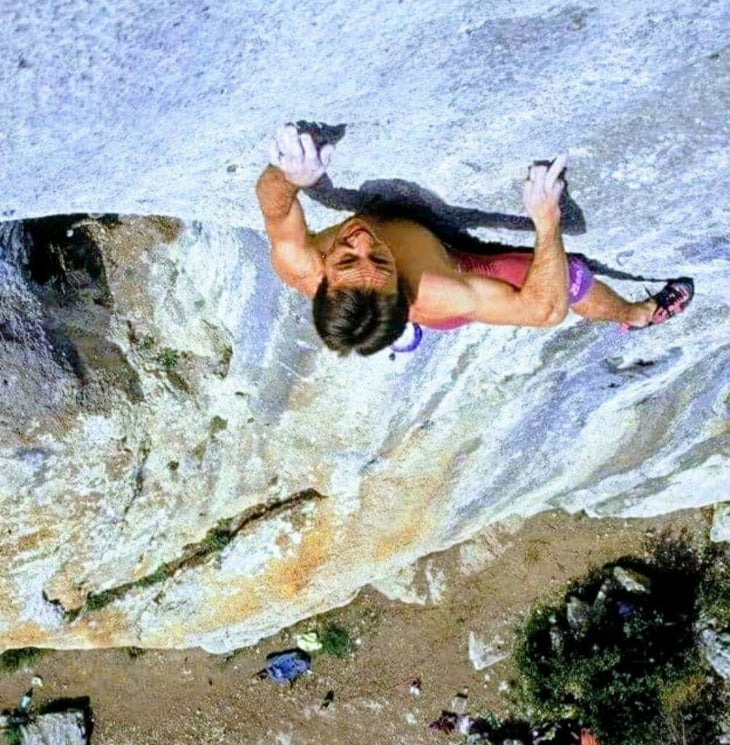
Climbing: Soon after you free soloed Pol Pot in 1996, you began pivoting your career toward free soloing buildings. Do you keep track of how many buildings you’ve climbed?
Robert: I’m not really counting anymore. Maybe like 250? But actually, I don’t really care. I still have some plans to climb new buildings. All of the sudden there is a new generation who are climbing some easy buildings and medium buildings. But if you look at all the difficult buildings I have climbed, none have been repeated.
Climbing: Is there a building out there that’s calling to you that you still really want to climb?
Robert: No, no, no. I have had the chance to stay alive for quite a long time. I took enormous risks and now I’m cooling down. I’ll be back in Verdon in October because I am doing a biopic. In the past, I have done 18 documentary films. This time, it’s something a lot bigger about 50 years of climbing. A little bit in the spirit of Free Solo. We’re going to see it most likely in 2027.

Climbing: While there have been a lot of documentaries about you, you’ve also done an effective job of promoting your own ascents on social media. Are you managing your own social media accounts?
Robert: Yeah. I am doing it on my own. The problem is that I am the one who is responding to people and if you’re not a climber, then it’s difficult because most people don’t understand much. So if it starts to be a non-climber who is responding, it’s going to be really bad.
Climbing: You’ve had some very diverse sponsors over the years. For example, you recently did a climb in Barcelona for a cryptocurrency company.
Robert: That was actually the second time that I was sponsored by cryptocurrency. What they organized with me in Spain was really huge. They rented a rooftop 300 meters away from the building and there were 100 people working up there, although everything was completely illegal. That was insane because actually they were live. I am still sponsored by Dead Man Fingers, this spicy rum.
Climbing: You’re not sponsored by a Champagne company? It seems like you need a Champagne sponsor.
Robert: I could have gotten Champagne for free. But the problem is that since I live in Bali, they cannot ship it to Indonesia or otherwise I will be paying an enormous amount of taxes … and you have realized that I love Champagne.
Climbing: Well, yes. Owen’s story about you in Summit Journal emphasized that. But that [indicating the mug he is holding on camera] looks like coffee.
Robert: This morning, I am on coffee. But you know it’s like eight o’clock in the morning in Bali. So I cannot start on Champagne. But actually I’m not drinking every day. Sometimes people may think that I am an alcoholic. The last two days, I didn’t touch a drop of alcohol. On Sunday, if I go for brunch, I like to enjoy a good Champagne. There’s a big difference between being seated with Owen, who is cooking me about climbing in Paris as it is raining cats and dogs—then, of course, I’m going to drink a lot. But if I am alone, I am just drinking like one or two glasses and that’s it.
Watch outtakes from our interview with Alain Robert, aka the French Spiderman
Climbing: I’m curious about your experiences in jail, where you’ve spent quite some time following your illegal “escalations” of buildings. What was the worst experience you’ve had in jail?
Robert: Maybe the last time I was in a jail that was bad was in the Philippines. I was injured; all of my fingers were destroyed, and also my feet. I was in a cell for six people, but we were 16 and there were cockroaches everywhere. Thousands. There is a light on 24 hours a day. And they are treating you like a shit.
It’s funny because when I was released, I was invited on a big live TV show and I met the mayor in Makati. She is the wife of a former vice president. We had lunch in a restaurant in Makati and I said on live TV that they could do a little better. It would be a small investment to get some clean cells like in Japan or South Korea. I have been jailed in San Francisco; there was a shower inside the cell—there was a TV. I have been jailed in China; it was not really good.
Climbing: Do you ever have dreams—or nightmares—about climbing buildings?
Robert: I’m dreaming very often about climbing on rocks or climbing on buildings. Sometimes falling. The good thing is that when you are dreaming and you are falling, the moment you are touching down, it wakes you up. Everybody is having this kind of dream. But I am a rather optimistic person. I’m not that afraid about dying actually. It’s just part of the process. We’re born, we die.
Climbing: What do you believe happens after you die?
Robert: For about two years, I have been very interested in quantum physics. There are thousands of studies by neurosurgeons on near death experiences from Yale, Oxford, Cambridge … they all come to the same conclusion: Our consciousness is not material. I am quite sure that we are energy, meaning our consciousness is not part of our brain. So when we die, our consciousness is still living. It’s just like entering into another room, another door, pushing a door.
Climbing: As you get older and continue to take risks, how have your thoughts on death evolved?
Robert: I would like to tell people not to be so afraid of dying. All our lives, we have been educated to fear death. I live here in Bali. And in the Balinese Hinduism, they are not afraid of dying. They believe that in death, the consciousness is not dying. They believe that they will be reincarnated as something else in their next life. People should be celebrating death. But if people are no longer afraid of death, then it’s going to become anarchy.
Climbing: When you die, what do you want people to remember you for?
Robert: I let them choose! What people may not realize is I did all the hard stuff on rocks or on buildings with a body that is completely destroyed. This is my hand. This is my wrist. [He holds up his visibly contorted wrist to the camera.] These are my fingers and these are my nerves. I also broke my ankles and everything.
[Editor’s note: Robert’s permanent disabilities result from three falls. The first two ground falls occurred in 1982 due to gear failures while rappelling. He also incurred serious injuries from a smaller ground fall caused by a slip while guiding in 1993.]

Climbing: Are you in pain all the time?
Robert: I have no pain actually. It’s more like two fingers, I cannot feel anymore because one of the nerves has been damaged in my elbow. When I am holding a pocket, if it’s very small, it’s a bit strange because I don’t feel it and the problem is that if you want to be sure that you’re holding it properly, you need to feel it. So I started to get used to it.
Climbing: Do you ever worry about popularizing free soloing and inspiring people who shouldn’t be climbing this way because they lack the necessary skill or mindset, and the consequences therein?
Robert: No, not really. If you look at the history, the people who are having the most accidents are those roof toppers. They don’t climb the side of the building—they use a fire exit, the lift, a big stick. So what has popularized this generation of roof toppers? The internet. Not me. I am fine with that, except this is not climbing. I am very sure that if tomorrow, there is no more internet, there is no more GoPro, there is no more of these people.
Climbing: What about you? If nobody was watching and there were no cameras rolling, no social media, would you still be free soloing?
Robert: I climbed for 20 years free soloing without nearly any media and I loved it and I’m still loving it this way.
Climbing: So, you would still climb buildings. You wouldn’t say, “Nobody’s watching. I’m going back to Verdon.”?
Robert: I love climbing buildings. As I said earlier, I am planning to live four months a year in Verdon. I’ll be climbing free solo every day. There most likely won’t be any images. There won’t be anything. It’s just because I love climbing.
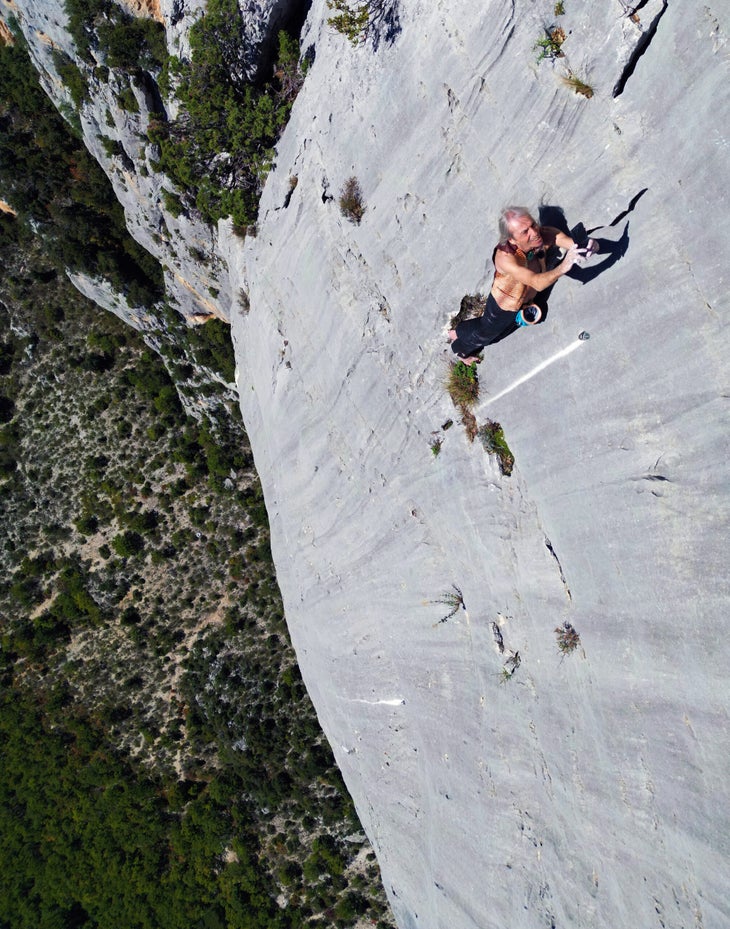
The post The French Spiderman Reflects on Free Soloing, Death, and Quantum Physics appeared first on Climbing.
]]>
'Turn to Stone' shares one woman’s candid and hilarious confessions on dirtbagging, love, and the climbing lifestyle.
The post This New Memoir Reads Like Sex and the City, But for Rock Climbers appeared first on Climbing.
]]>
The new memoir Turn to Stone is not your typical climbing read. For one, the author is not a pro climber reflecting back on their career. (She is admittedly average.) Nor does the narrative center upon an epic mission ending in historic success—or tragedy. (The book spans a seven-year period during which nothing particularly noteworthy is climbed.) And there is no point per se—no soapbox assumed or major issue tackled. So what is Turn to Stone?
“The book is a love letter to climbing and the climbing community,” says author Emily Meg Weinstein.
The reading experience for me felt more like the diary of an unlikely dirtbag. Weinstein looks back on her best years with humor, nostalgia, and the search for meaning. Before becoming a climber, the author was embedded in the punk rock scene of New York—and decidedly unathletic. In search of new purpose after escaping a toxic relationship, Weinstein stumbles upon Yosemite and falls in love with the sport. She moves into her Subaru (dubbed “Suby Ruby”) and tucks under the wing of a rotating cast of charismatic mentors. And, yes, she also dates a lot of climbers—and has a lot of sex.
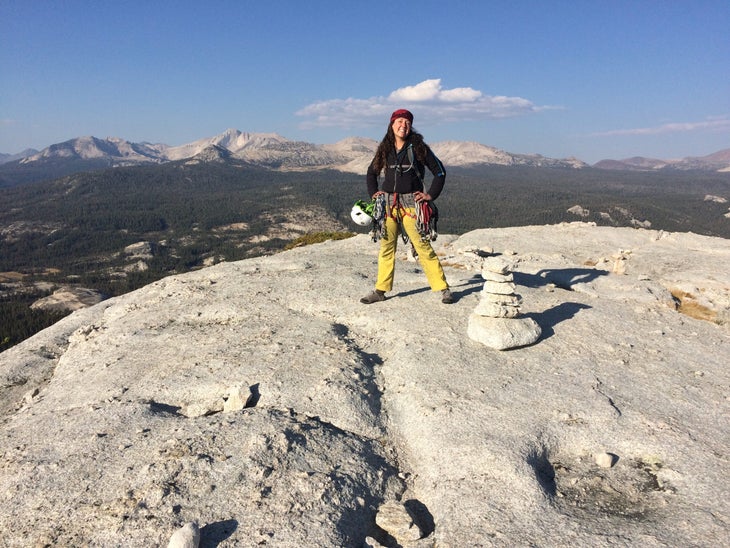
What’s so enjoyable about this read is how relatable it feels to the ordinary climbers of the world (aka, most of us). Weinstein may not have put up first ascents, sent 5.15, or done anything to revolutionize the sport. Yet she fundamentally understands climbing and what it means to so many of us. She gets how it pulls you in and changes your life. To that end, she shares starkly honest vignettes about illegal camping, fear on the sharp end, the finer points of living in a vehicle, and the joys of personal progress. And with total candor, she recounts what it’s like to fall in (and out of) love with a climbing partner.
Even though I’ve never been to some of the main locales of the book or lived out of my car, Weinstein’s account felt familiar. The who, where, and what of climbing differ among all of us, but the how and why often unite us.
Like the best historians of cultural eras, Weinstein successfully captures the all-consuming magic of the climbing lifestyle in modern times. In that way, she has written a love letter to climbers. It’s a missive to the masses who haven’t done anything extraordinary on rock, but keep on climbing for the love of it.
Turn to Stone is available wherever books are sold on September 2. Below are some of my favorite (and among the funniest) quotes and passages from the book—keep scrolling for my interview with Weinstein.
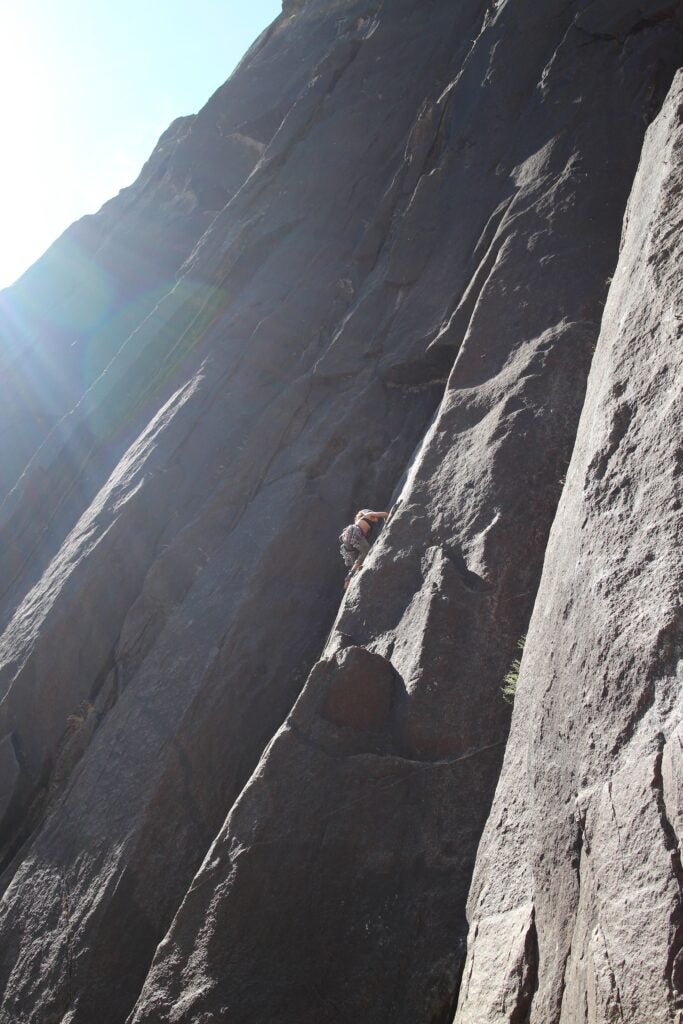
My Favorite Quotes From Turn to Stone
“We sat in the meadow, looking up at the big stone wall.
‘That’s El Capitan,’ he said. ‘I’m going to climb it one day.’
‘I’m going to write a book one day,’ I told him.
‘I’m sure you are,’ he smiled, ‘That will be your El Cap.'”
“For most of my life, I’d thought Joshua Tree was just the title of a U2 album. But it turned out it was also a place, in the desert east of Los Angeles.”
“The crack did not eat me. I did not let it. I did not let the chick with the perfect nachos and the perfect minivan and the perfect 5.12 boyfriend see me fail, or give up.”
“Underneath the body-wide bruise a new and deeper layer was forming, maybe somewhere in the marrow, a living part of me of which I’d never before been aware. I thought of superheroes busting out of their cutoffs, writhing in transformation from spider bites, caterpillars liquefying in their chrysalises before they sprouted wings. My hands looked like someone else’s hands. I was becoming something else, something new.”
“Climbing was the first thing that didn’t come easily to me that I did anyway. It was the first thing that actually quieted the demon of my own desire to destroy, or self-destruct. And being bad—or not that great—at rock climbing was exponentially more fun than being good at school. Nerds cared too much about school, but climbers didn’t even care about death.”
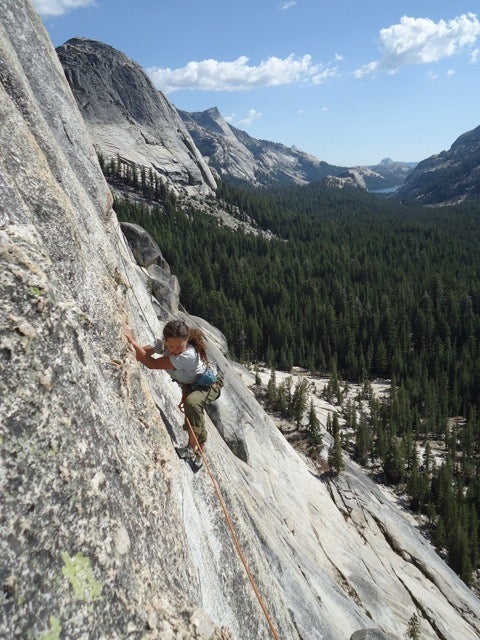
“Growing up, I was scared of rooms without windows and didn’t know why. I was scared of the dark, scared of the night … But up in the Meadows, up on the wall, with those Jedi Stonemasters, there was so much room, and light, and air … I felt safe, utterly safe, even hanging from one nut—one good nut—hundreds and hundreds of feet above the ground, safer in the vertical than I felt on the ground. In a way, I was re-parented, in the vertical, by two Stonemasters from Southern California who never had kids of their own but have adopted many misfits like myself, loved them well, taught them all they knew—and set them free.”
“In the time it took me to assess the size of the spot in the rock where I’d stopped to rest and select a piece from my harness, Honnold, unencumbered and shirtless, climbed up from the ground until he was just below me.
‘Hey,’ said Alex Honnold, nodding politely as he soloed past.
‘Hey,’ I replied, trying to look as casual as he did.”
“‘I have a theory about 5.12.’
‘What’s that?’
‘5.12 is the douchiest level. It’s the level of climbing that makes people the most douchey.’
‘How did you discover this? Did you become a douche?’
‘Not yet,’ he said. ‘But the more I climb 5.12, with the other 5.12 climbers, the more I confirm this theory.’”
“And with that promise, I laid down my arms, and said a silent prayer of thanks to all the crushers who hung the ropes on the hard pitches. Even if they couldn’t marry me and give me babies, even if they didn’t want to be in a committed relationship, even if they were more afraid of intimacy than free soloing, even if they couldn’t find it in their hearts to accompany me into the dark night of the soul, or accompany me into more than a few of them, they had helped make me fierce enough to face it on my own.”
The quotes above are excerpted from TURN TO STONE. Copyright © 2025, Emily Meg Weinstein. Reproduced by permission of Simon Element, an imprint of Simon & Schuster. All rights reserved.

Q&A with Emily Meg Weinstein, author of Turn to Stone
Climbing: You pitched this book as “Sex and the City meets rock climbing.” What parallels do you see between the show (or even its successor And Just Like That) and its themes within your own past life as a dirtbag?
Emily Meg Weinstein: As a curly haired, chronically single, New York woman writer who came of age right as the original series dropped, the influence was inevitable. Turn to Stone is a confession about what it’s like to be an adventurous and artistic woman in her 30s, who likes sex and wants love—which is, sadly, a radical enough story in these inhuman and patriarchal times.
But Sex and the City isn’t the only influence or text from which I drew inspiration. The late feminist and Playboy columnist Cynthia Heimel is one of my idols for writing about sex, drugs, and rock and roll in 1980s New York, specifically in a forum where she could reach male readers as well as female ones.
There are absolutely no parallels between the Sex and the City reboot And Just Like That and my own dirtbag experience. Though I did use what I can’t even pretend was a hate-watch of the mercifully final season as a pleasant diversion during the final phase of launching this book.
Climbing: How else does this book depart from the more traditional climbing or adventure read?
Weinstein: I envisioned the book as a 21st century feminist version of woefully dead, white male, road-and-wilderness classics like On the Road, Fear and Loathing in Las Vegas, and Ed Abbey’s Desert Solitaire—but with more sex and feelings, which are seen as traditionally female.
Climbing: How would you describe the chapter of your life captured in this book? And to what extent, did you identify as a dirtbag during that period?
Weinstein: Turn to Stone is about my first seven or so years as a climber. I wasn’t a full-time dirtbag. I always had a home, though for a while it was an illegal occupancy of an art studio in a former military barracks, or a tiny cabin too small for a couch. But I climbed in Yosemite or Tahoe a weekend or two each month, went to Joshua Tree multiple times each year, and roamed the West and the country in all seasons. I climbed for weeks at a time in the summers, when I was off from my day job tutoring teenagers.
The time we got an Airbnb in Vegas for Thanksgiving in Red Rock in 2016 or 2017 was the beginning of the end for me sleeping in my vehicle for long periods of time. I have become embarrassingly attached to indoor plumbing, especially for writing purposes. My Long Island roots are showing.
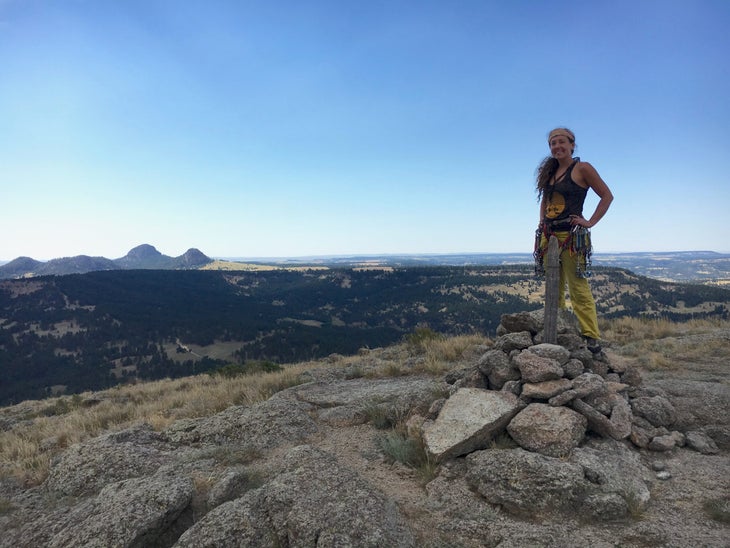
Climbing: Climbing has changed a lot since the period documented in your book. What’s the most surprising way in which climbing has evolved?
Weinstein: Since I started climbing in 2011, climbing has changed in one major way for the better: It’s become more diverse and accessible to folks of more racial, sexual, and gender identities; body sizes, abilities, and disabilities; and even levels of wealth. With the mainstreaming of high-profile climbing stories like Honnold’s Free Solo or the more recent Girl Climber, climbing has become more familiar to people who don’t climb. I’m stoked on that because I think it made space for me to write this memoir, which I see as the first truly mainstream, literary climbing memoir.
The way that climbing has changed for the worse parallels the way our country and the world have changed from 2011 to 2025. More wilderness areas are under threat of mining, oil drilling, and other forms of destruction under the Trump administrations. Because of the rising tide of American fascism, many of the rural areas where climbing often takes place have become, I think, even more frightening for anyone who isn’t white and/or gender-conforming. A lot of the parking lots I once slept in and wilderness “bivies” where I spent the most joyous years of my life are now off-limits to climbers, campers, and travelers.
But as my favorite astrologer Chani Nicholas would say, rocks don’t change very much in a decade or two. They don’t change much in a century or even a millennium. Sometimes they change really fast—parts of routes I’ve climbed have since fallen off—but they mostly stay the same as we humans age and soften and slowly turn to dust.
Climbing: Yosemite plays a major role in your memoir. When’s the last time you were back in Yosemite?
Weinstein: I snuck off to Tuolumne Meadows in Yosemite for a quick “book babymoon” pre-launch. Though I barely touched rock and was embarrassingly weak when I did, the granite was the same as ever. The river was flowing. The peaks I’d once touched still loomed above. Talking shit with my climbing buddies was as pleasant as ever.
There is another generation of dirtbags coming up, sleeping in Honda Civics and sending for the pure joy of it. What we love most about it will never die. It will just get harder, as the world burns hotter, which means that the next generation will be even more rad.
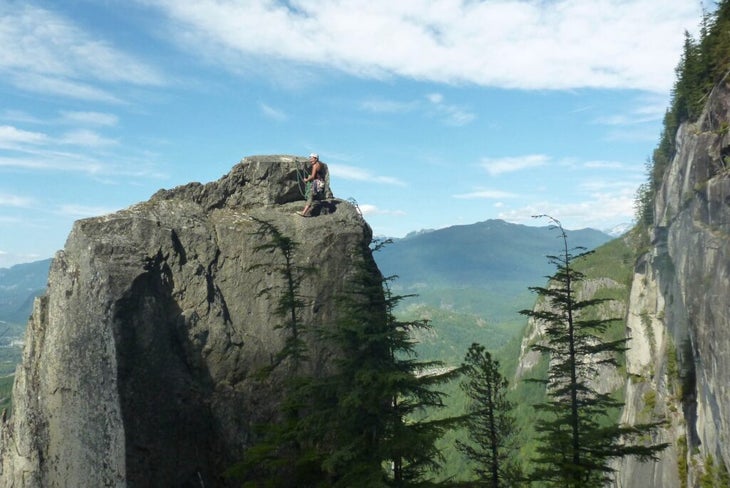
Climbing: How has your own relationship with climbing evolved since the days you write about in Turn to Stone? Are you still all about the moderate trad routes?
Weinstein: I will always be all about the moderate trad routes. I’m too weak of flesh and ankle to boulder, and I really like getting high in every possible way. There is something about a continuous, protectable 5.7 hand crack that fixes something that is broken in my brain and soul. And I just really love, and prefer, the granite where I fell in love with climbing.
I felt really badly about how little I climbed while I wrote my book until I read that Tommy Caldwell didn’t climb for a year when he was writing his. The pandemic, and later the book, radically changed the texture of my climbing life.
Like most climbers in their 40s and beyond, I’m evolving into a trad dad weekend warrior. Climbing is more a part of my life than the whole. I miss the times when it was everything. I knew what to do at every moment of the day.
Climbing: As you were writing, did you imagine speaking to non-climbers to convey the magic of the climbing lifestyle? Or were you picturing climbers as readers, prompting them to look back on their own journey?
Weinstein: My ideal reader is pretty much anyone and everyone! I really imagined, sold, and wrote this memoir very deliberately for non-climbers and climbers alike. I think climbers will read this and resonate deeply with it. I’m also hearing from early readers who aren’t climbers that it’s very relatable for them, because I “write about climbing in such an appealing and super-legible way, from a non-climbing perspective,” according to a poet friend.
Also, during my interview on The Runout, Chris Kalous told me I had “captured the magic of climbing,” which was my ultimate goal. So I think that this book is also for anyone who likes and believes in magic.
But my ideal reader is anyone, including Timothée Chalamet, who could be very well-cast as an amalgamated noncommittal climber boyfriend character in the movie version of this book, and Natalie Portman, who I think could both star and produce.
Climbing: Your book is packed with emotion, sex, and wit, which is not necessarily the norm for climbing literature. Do you think climbing stories ought to have more fun?
Weinstein: We need to break down more barriers of genre so that emotion, sex, and wit—as well as pain, joy, death, fear, radical honesty, politics, philosophy, ideas, and maybe even baseball—can all be part of serious mountain literature, and that people can tell their stories in all their complexity and dimensionality.
More lately, pro climber Steph Davis wrote gorgeously about love and loss in her memoir, Learning to Fly. Beth Rodden’s recent memoir, A Light Through the Cracks, also deals with more emotional material, alongside the quite hardcore climbing narrative.
But you’re right—a climbing podcast interviewer said that it almost felt “taboo” that the book is at least equally about the more universal experience of sex as it is about going up and down rocks. Part of that is that I simply don’t climb very hard. Another part of that is that I’d rather describe my own desire, rage, horniness, pain, longing, and constantly running stoner brain than another tree, cloud, or even hunk of granite. Also, whether you’re FA-ing 5.14 or plod-romping up a moderate trad route, the shit that happens is surprisingly similar.
We should all worry less about genre and write as freely as we climb.
The post This New Memoir Reads Like Sex and the City, But for Rock Climbers appeared first on Climbing.
]]>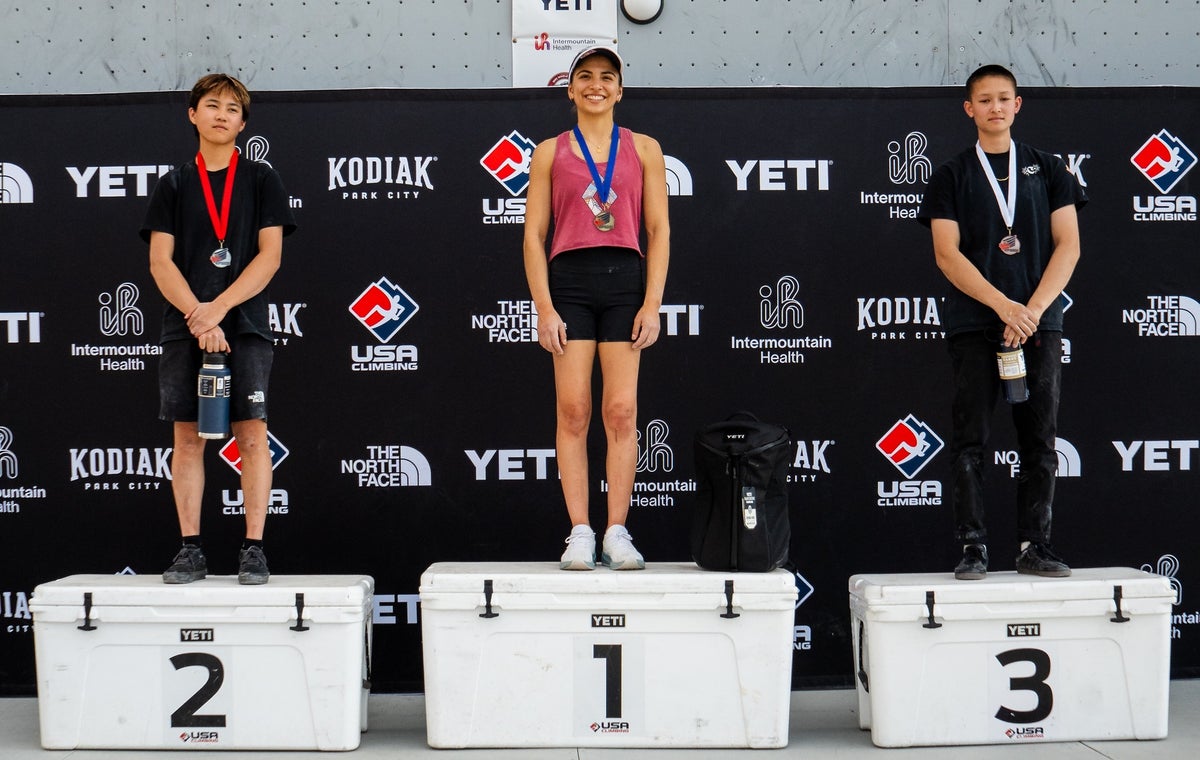
At the North American Cup finals yesterday, the local Olympian won in Women’s Lead. Find out how Michaela Kiersch, Kai Lightner, and Nathaniel Coleman stacked up—and who took men’s gold.
The post Natalia Grossman Takes Gold in Stunning Post-Injury Comeback appeared first on Climbing.
]]>
Six months after undergoing ACL and meniscus surgery, Natalia Grossman returned to competition over the weekend. After over half a year of injury and rehab, the Salt Lake City-based climber proved she’s still got what it takes, winning Gold in Women’s Lead at the North American Cup (NAC) finals on August 24.
The event took place near downtown Salt Lake, in the lot adjacent to the USA Climbing headquarters. With temps in the mid-80s, over a hundred spectators donned sun hats and made shade with umbrellas, while the competitors burned through chalk. Many came to cheer on a few outdoor crushers and local legends. Among them: Grossman, Michaela Kiersch, Kai Lightner, and Nathaniel Coleman. Chris Sharma, who is considering a path to competing in the 2028 Olympics, had debated entering this comp, but decided to wait until another qualifying event in 2026. The August 2025 NAC consisted of men’s and women’s competitions in both Lead and Speed.
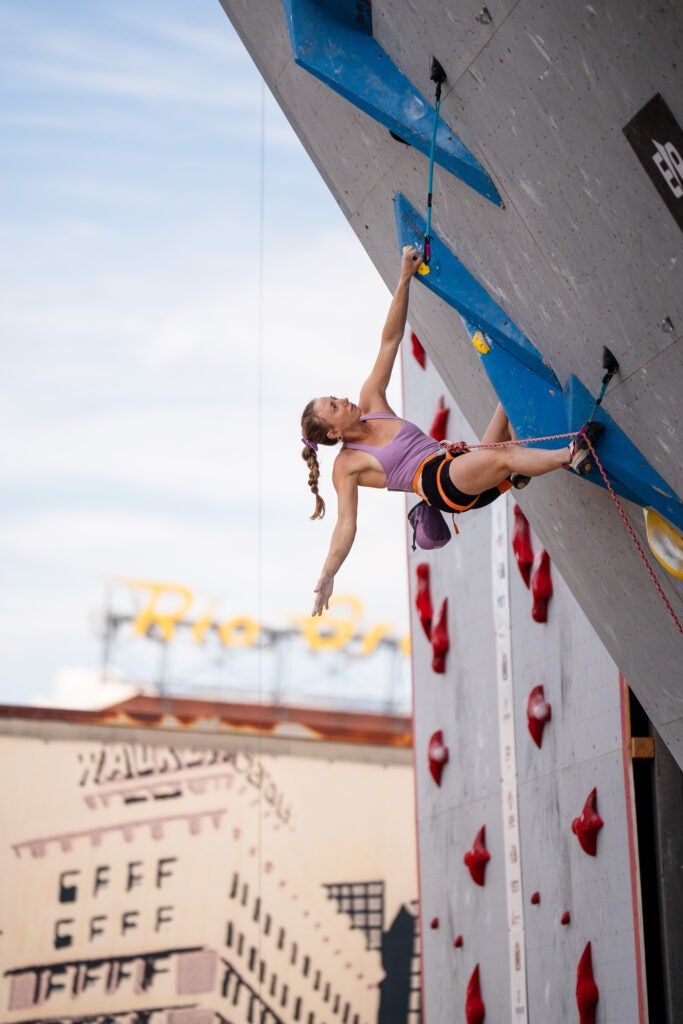
Grossman’s golden comeback
While training last February, Grossman sustained a torn ACL and meniscus in her left knee. Since her injury, she has been documenting her journey of undergoing surgery, then training to climb past her injury. At the NAC on Sunday, Grossman climbed with composure and finesse, even performing a drop knee with her injured knee. She had been particularly apprehensive about the run-and-jump bouldery start—a move she hadn’t performed in six-and-a-half months due to her injury.
“In isolation, we got a route map and seeing the run and jump in the picture, it looked so high!” she told Climbing. “After seeing it in person, it was much smaller and the risk of falling seemed very low. I was pretty happy to stick it, and being in finals was already a huge win.”
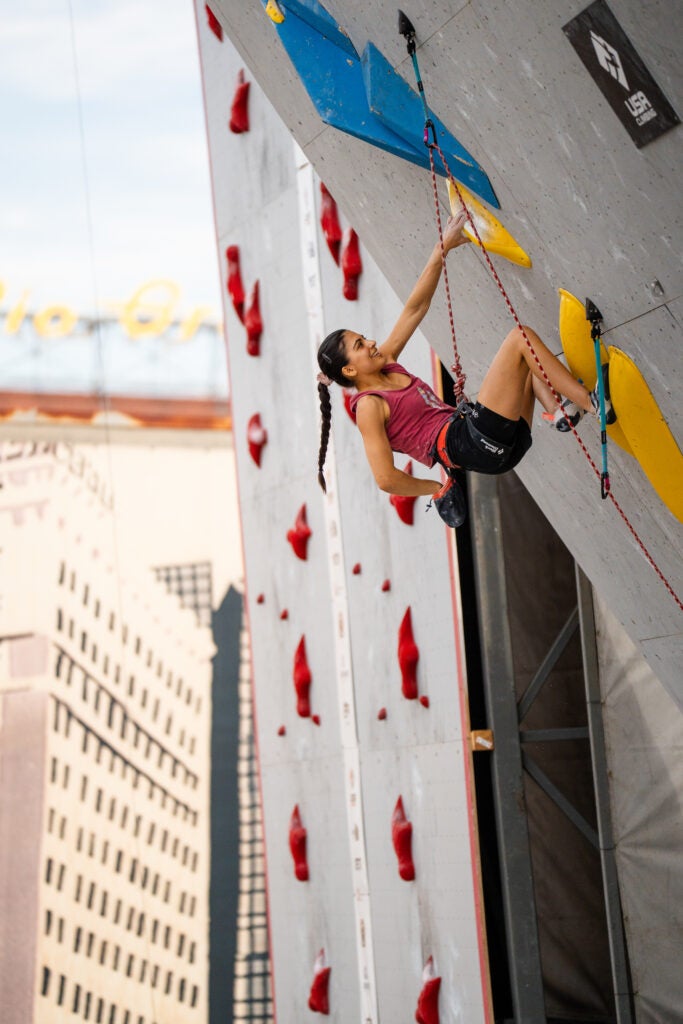
The 24-year-old athlete even cracked a smile or two while competing; Grossman’s mantra is “smile and fight.” She fell while trying to make the third clip from the top, but reached the high point on the route among the women’s competitors. Previously, Grossman competed in the 2024 Olympics and has won 11 gold medals at International Federation of Sport Climbing (IFSC) World Cups. Grossman’s next comp will be the YETI National Championships in February 2026.
After her win in Salt Lake, Grossman reflected, “My recovery is nowhere near over, but I’m in it for the long haul and excited for the next opportunity I get to compete.”
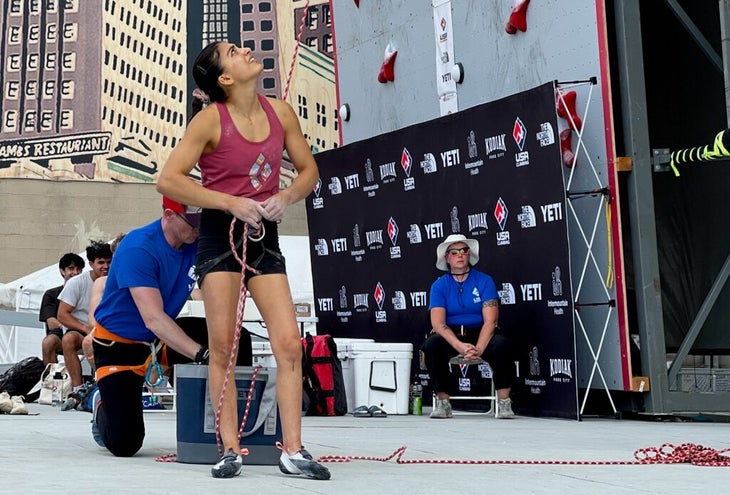
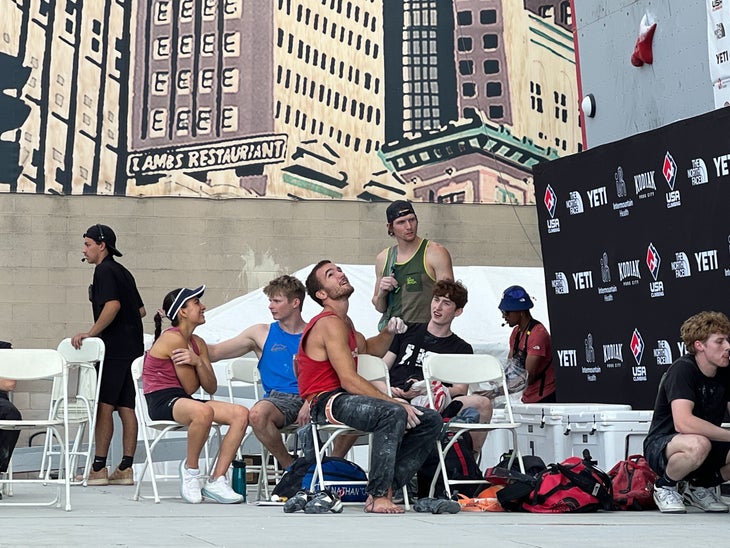
Legends light up Lead: Kiersch, Lightner, and Coleman
The first woman to climb both V15 and 5.15, Michaela Kiersch, who also lives in Salt Lake, ultimately ranked fourth in finals, after placing second in semi-finals earlier in the day. Kiersch came into the finals with a higher score than Grossman in the semis. Prior to the event, Kiersch said that competing would be “a great opportunity to have some fun and challenge myself in ways that I haven’t in a while.”
Nathaniel Coleman was also vying for the podium, but didn’t make it out of semifinals. This Salt Lake local has been recently more focused on outdoor bouldering, putting up the first ascent of No One Mourns the Wicked (V17) last December. Next year, he hopes to make Team USA for Lead, though before this past weekend, he hadn’t entered a USA Climbing comp since 2023. He took twenty-third in the NAC semifinals.

Lightner, who recently shared the story behind his first ascent of Death of Villains (5.15a), took sixteenth in semifinals after his foot slipped. This was his first time competing at a USA Climbing event since 2019. Prior to that, he won 12 national titles, six Pan-American titles, and five Youth World Championship medals.
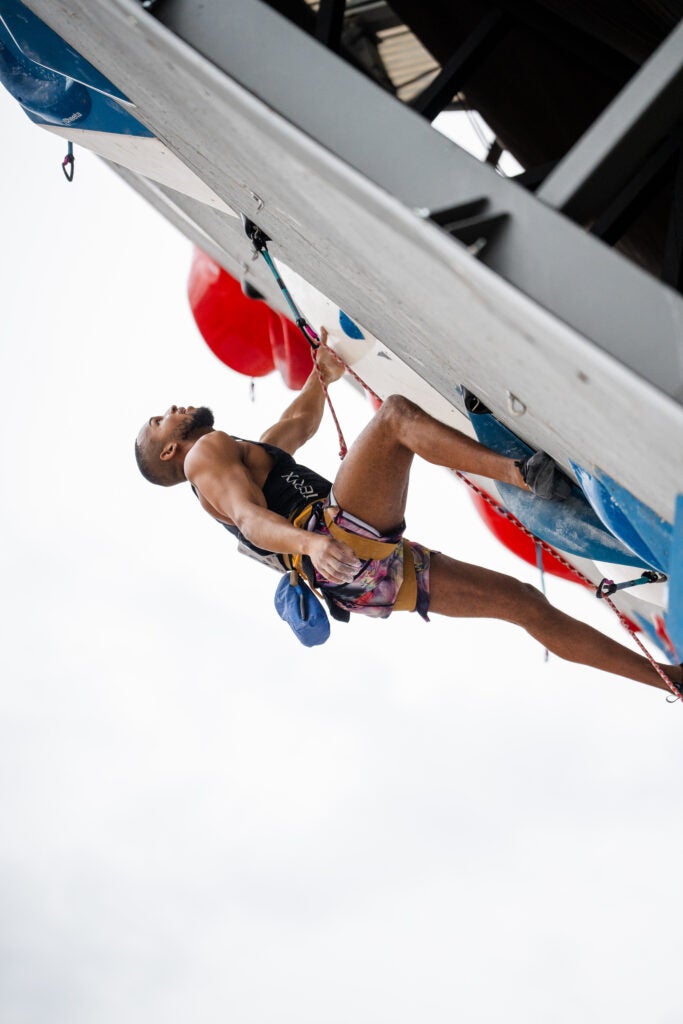
“I’ve always loved the energy of comps, so I figured it was time to throw my shoes back on and have some fun with it,” Lightner said before the event.
Both Coleman and Lightner showed up in the afternoon to spectate the finals.
The Men’s Lead winner, and more NAC results
Meanwhile, in the Men’s Lead comp, dark horse Sergey Lakhno dominated, winning gold. The Seattle-based climber is a member of Team USA and previously took gold in Lead in two North American Cups last year and first place at the National Team Trials in the spring. This weekend, the 21-year-old handily won the men’s qualifiers and semifinals. In September, he’ll compete in the IFSC World Cup in Koper, Slovenia, followed by the IFSC World Championships in Seoul.
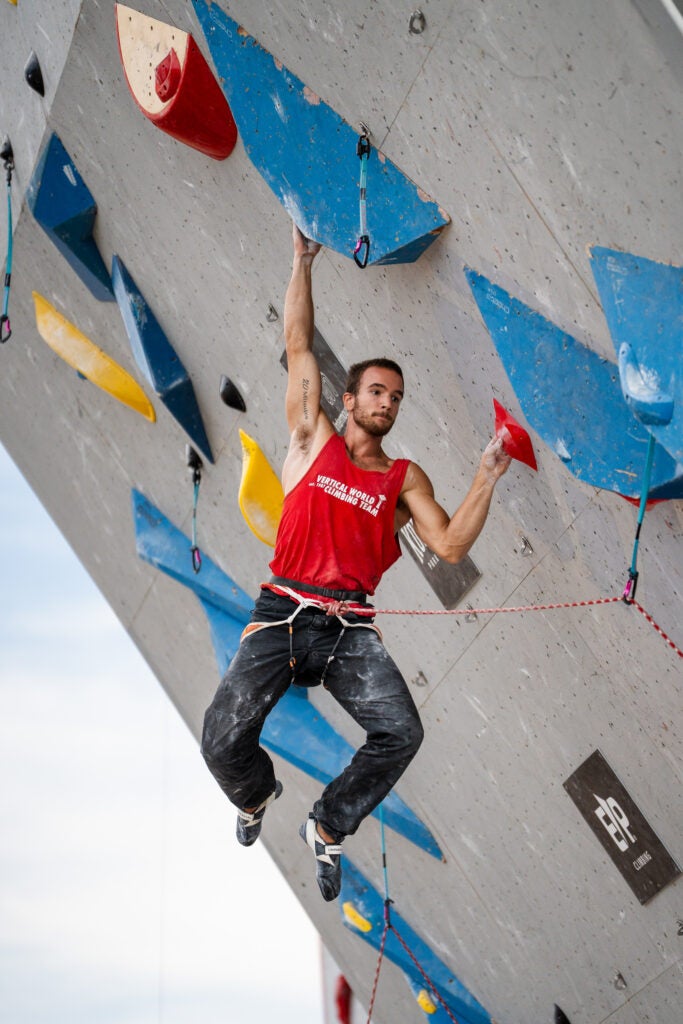
Cruz Padilla, who also topped the route, took second for men’s, while Nathan Sato placed third. In the Women’s Lead discipline, Zoe Yi came in as a close second, and Analise Van Hoang took Bronze.
In Speed, Isis Rothfork took gold for women with a time of 6.87 seconds. Logan Miner took gold in Men’s Speed with a time of 5.78 seconds. A youth Speed comp also took place over the weekend for 15-16 year olds; Alexis Prokopuk took gold in the women’s and Griffin Smith took gold in the men’s. Full results from the August 2025 NAC can be found at USA Climbing.
Watch Natalia Grossman and Sergey Lakhno climb at the NAC
The post Natalia Grossman Takes Gold in Stunning Post-Injury Comeback appeared first on Climbing.
]]>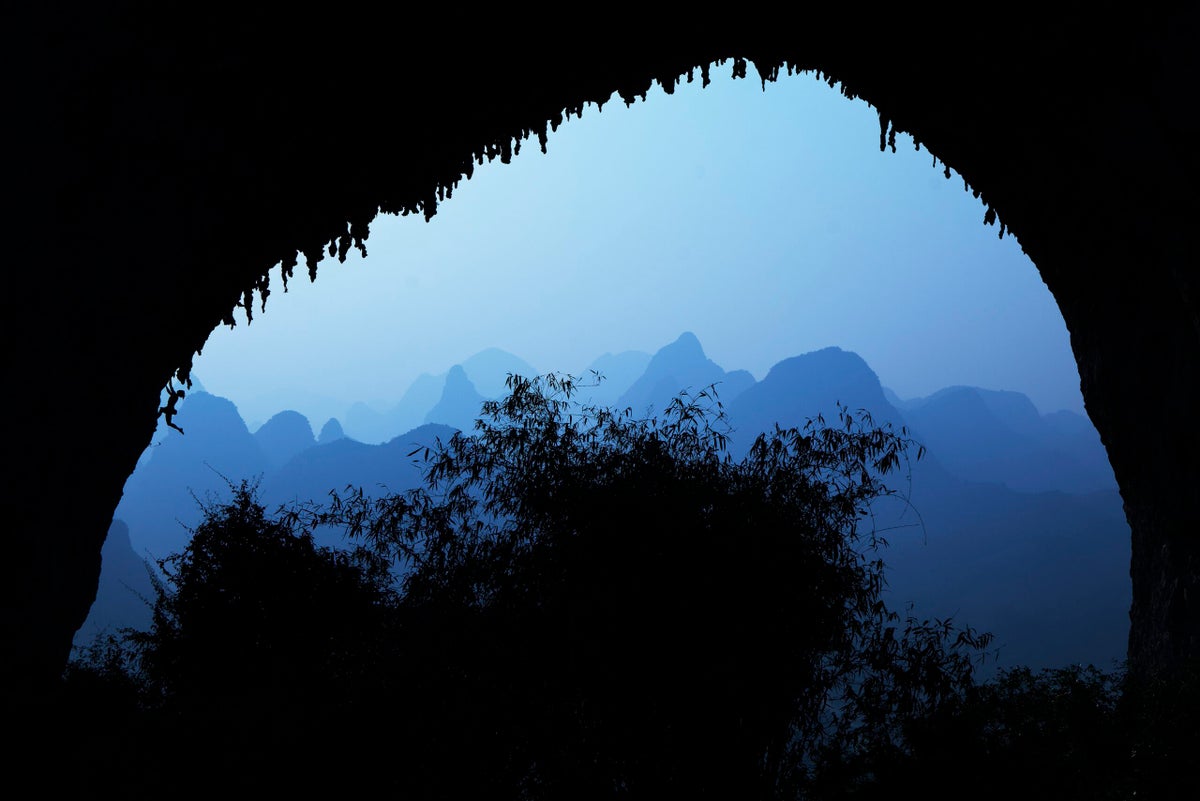
Behold: Astrology for climbers
The post The Best Climbing Style for Every Zodiac Sign appeared first on Climbing.
]]>
As all good climbers know, the secret to the send is more than strong fingers and solid footwork. It often all comes down to mindset. If you’ve been struggling in the climbing mentality department, consider a different perspective: your Zodiac sign.
We consulted in-house astrology expert Calin Van Paris at Yoga Journal to get the beta on how to abide your sign as a climber. Unlock your cosmic potential by exploring your astrological sign and what it suggests about your ideal climbing discipline, your anti-style, the best climbing partner for you, and what might take your climbing to the next celestial dimension.
Aquarius (January 20-February 18)
The Aquarius climber doesn’t move like you do—and they want you to know that. You may find them traveling to remote and rugged regions to bag first ascents, climbing multi-pitch in unconventional attire, or completely ignoring your beta. They still firmly believe that one of the greatest moments of all time in climbing was when the late Hayden Kennedy chopped the bolts on the Compressor Route.
Ideal style: Onsighting and beta breaking. This unique climber is all about chasing originality. They don’t want your beta, and if you give it to them, they will go out of their way to invent a different sequence.
Anti-style: Classic routes
Compatible partners: Gemini, Sagittarius
Aquarius climbing challenge: Humanitarians by nature, Aquarius climbers should choose a cause to support through their climbing. Take on an ambitious project to raise funds and awareness for environmental justice, or volunteer for Access Fund to clean up your local crag.
Pisces (February 19-March 20)
With off-the-charts EQ and a bottomless capacity for compassion, the Pisces climber really shines when they’re not climbing at all—they are the consummate belayer. Did we mention they have martyr tendencies? This means they will offer to belay their partners all day long, while they secretly simmer.
Ideal style: Deep water soloing. With no belaying involved, you can stop being a martyr and lean/plunge into your element (water).
Anti-style: Dynos
Compatible partners: Virgo, Taurus
Pisces climbing challenge: The Pisces climber will thrive on a bouldering project, where they can work the moves solo, or show up with a crew depending on their mood. Choose a highball, a tricky top-out, or an anti-style problem to challenge yourself to overcome your fearful tendencies.
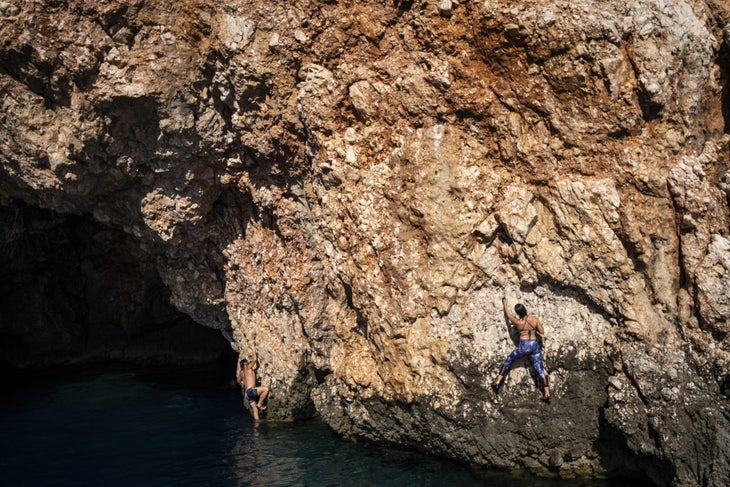
Aries (March 21-April 19)
The resident rope gun of their crew, an Aries often sandbags themselves on limit grades and bold routes. You can usually find them going for the glory sends. They may or may not own a drone that they ask you to fly as they punch through the crux.
Ideal style: Steep sport climbing. With the patience of a pika and the courage of a ram, the Aries climber doesn’t have time to faff around with gear or systems. They feel most at home on pumpy sport routes, possibly in a photogenic cave.
Anti-style: Rope soloing (did you even send if no one was watching?)
Compatible partners: Libra, Leo
Aries climbing challenge: Rally a crew and plan a trip to the iconic Hurricave, where your bravery can reach new heights and angles. Also, your fiery nature will be right at home in the sweltering southern Utah desert heat.
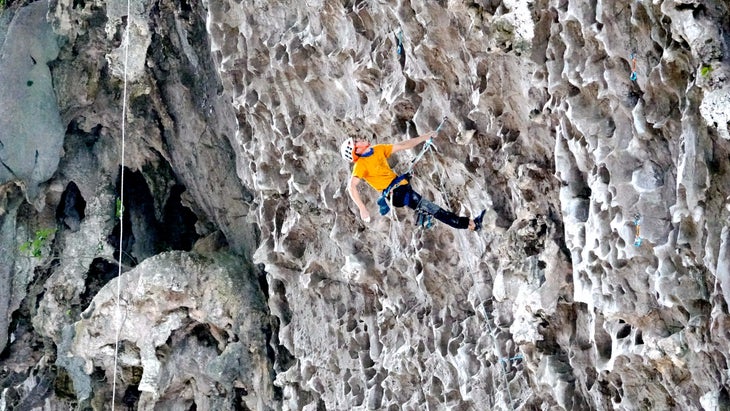
Taurus (April 20-May 20)
What tick list? The Taurus climber is all about returning to their favorites. There’s nothing like the reassuring feeling of working the same beta over and over and over again. Since they’re probably as stubborn as a rock, good luck convincing a Taurus otherwise.
Ideal style: Moderate traversing. Grounded and responsible (sometimes to a fault), the Taurus climber has been known to tackle the same post-work traverse on their neighborhood cliffline on a weekly basis.
Anti-style: Big walls
Compatible partners: Scorpio, Cancer
Taurus climbing challenge: Shirk the coziness of sticking within your abilities by giving yourself a close-to-home trad climbing project a grade above your comfort level. The nature of projecting will soothe the creature of habit within, while the grade and gear placements will help you evolve.
Gemini (May 21-June 20)
“It’s not a competition,” a Gemini will say shortly before recording how long their partner took to send the route and how many times they had to hang, compared to them. According to a Gemini climber, most if not all climbing areas they’ve been to are hopelessly sandbagged. Either that, or they happen to be at some sort of disadvantage due to their height, ape index, or finger anatomy.
Ideal style: Multi-pitch slab. Unafraid of heights and secretly sensitive, the Gemini climber is a friction ninja and they want the world to know it.
Anti-style: Gym bouldering (they can’t handle getting lapped by the little crushers)
Compatible partners: Sagittarius, Aquarius
Gemini climbing challenge: Enter an actual competition. A local comp, a climbing fest marathon, an invented tournament among friends—any competitive event will do. Find out what happens when you lean into the heat.
Cancer (June 21-July 22)
The Cancer climber is often just here for the vibes—or because they’re loyal to their buddy who needs a belay. Yet with the persistence of an early 20th-century alpinist, this low-key crusher often exceeds expectations on the rock.
Ideal style: Seaside cliffs. Willing to wait for the right conditions and abide the tide, the Cancer climber finds the most happiness getting into their element alongside the water.
Anti-style: Steep sport climbs
Compatible partners: Capricorn, Taurus
Cancer climbing challenge: Soothe your soul on the sea stacks of Scotland, where your tenacity will shine amid the moody skies, salt-worn sandstone, and peaty, post-climb Scotch.

Leo (July 23-August 22)
The life of the crag or the campfire, Leos are bold climbers—though they don’t necessarily work for it. Instead, they rely on their ingenuity, ego, and fire within to send. Chances are, they will document that using the latest GoPro or 360 camera, too.
Ideal style: Free soloing. Seeing lines and possibilities where others don’t, the Leo climber will tell you “it goes,” then prove it, without a rope and with a camera.
Anti-style: Crimpy routes requiring extensive time on the fingerboard
Compatible partners: Gemini, Aries
Leo climbing challenge: Develop a ridiculously creative and ambitious birthday climbing challenge for yourself. Like 290 pitches for your 29th birthday à la Alex Honnold ridiculous. Plot twist: Don’t tell anyone about it. Ever.
Virgo (August 23-September 22)
Reminding everyone to warm up their fingers. Calling out your back-clip. Alerting the crew that sunset is in 46 minutes and no one brought headlamps so it’s time to pull the ropes. This voice of reason approaches everything from training to their projects with a strong work ethic and pragmatism.
Ideal style: Offwidths. While they might be slow to warm up to other humans, the Virgo climber loves disappearing into a crack and getting intimate with the rock.
Anti-style: Highballs
Compatible partners: Pisces, Cancer
Virgo climbing challenge: Lead a route with run-out or thought-provoking protection. Faff around and find out.
Libra (September 23-October 22)
A Libra’s worst nightmare is finding themselves at a high camp in the mountains or 10 pitches up a big wall with two partners whose oversized egos have resulted in a high-alpine, high-stakes conflict. The Libra climber will do everything in their power to keep the peace, which means they will also become easily stressed out if two different friend groups ask them to climb on the same day.
Ideal style: Alpine climbing. They love the intimacy of sharing a one-person tent with two other humans—as long as everyone is getting along.
Anti-style: Comp climbing
Compatible partners: Aries, Sagittarius
Libra climbing challenge: Get your AMGA Single Pitch Instructor certification and start guiding on the side. You are likely to enjoy what many guides dread: Making small talk with non-climbers asking you the same questions over and over again. You will also excel at nipping any conflict among your clients in the bud.
Scorpio (October 23-November 21)
Scorpios know that real ones don’t call themselves “all-around climbers.” You can’t be good at climbing anything if you climb everything, they will tell you while putting the eighth burn of the day on their project. While they are downright diabolic about training (their current plan lives on a password-protected spreadsheet), they don’t entrust their progress to any one school of thought or method. If they are currently working on a project, it will be challenging for them to talk about anything else.
Ideal style: Finger cracks. In between pulley injuries, the Scorpio climber can be found torturing themselves on a razor-thin crack that only four people have ever climbed.
Anti-style: Adventure climbing
Compatible partners: Cancer, Taurus
Scorpio climbing challenge: Belay another Scorpio on their project. Observe what you learn about yourself in the process during this illuminating (and likely humbling) exercise.
Sagittarius (November 22-December 21)
Full of ideas and limitless stoke, the Sagittarius climber is on a meandering journey that cannot be defined or predicted. One minute, they’re spending the season in Yosemite, the next, plans have changed and they’re chasing an obscure summit in Finland with a new best friend they met last week.
Ideal style: Adventure climbing. As fickle and free as the wind in western Wyoming, a Sagittarius climber likes to keep it interesting in the vertical world, whether they’re trying out a new style or taking whippers halfway around the world.
Anti-style: Board climbing
Compatible partners: Gemini, Aires
Sagittarius climbing challenge: Commit to a four- or six-week training program—and don’t bail on it halfway through. If you find yourself getting antsy, switch it up and go to a different gym, mount your hangboard outside, or recruit a new training partner to do whatever you can to keep your head in the game.
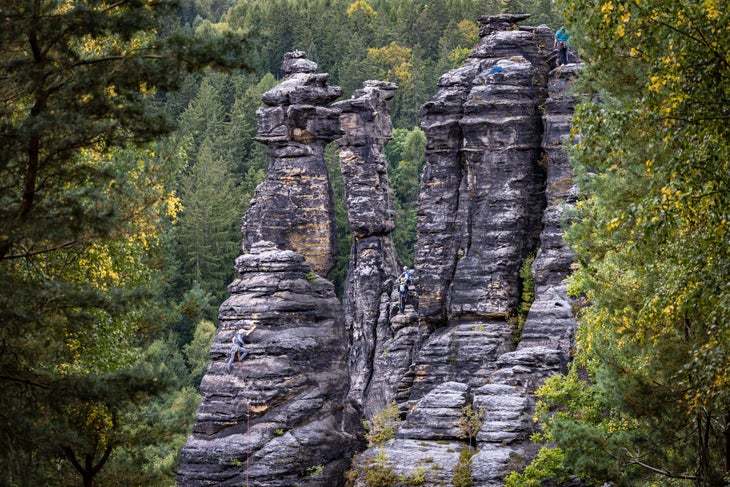
Capricorn (December 22-January 19)
Headphones in and head down on their latest training plan, the Capricorn climber is motivated—and ready to psych up the whole crew, too. Though their ambition knows few bounds, they rarely sacrifice safety upon the altar of the send. This may be because they’ve read every Accidents in North American Climbing published in the last seven decades.
Ideal style: Ice and mixed climbing. Since the Capricorn is also likely beholden to a 9-to-5, they can’t chase send temps in Mexico with their dirtbag compatriots. Instead, they spend their weekday evenings sharpening their points and their weekends ticking off their list of classic multi-pitch ice and mixed lines.
Anti-style: Adventure climbing
Compatible partners: Cancer, Taurus
Capricorn climbing challenge: Spend a fortnight in Joshua Tree, where the free-spirited vibes will test your patience and the highballs will make you feel downright irresponsible. At least once, wander among the cactuses with no agenda and a macrodose on board.
The post The Best Climbing Style for Every Zodiac Sign appeared first on Climbing.
]]>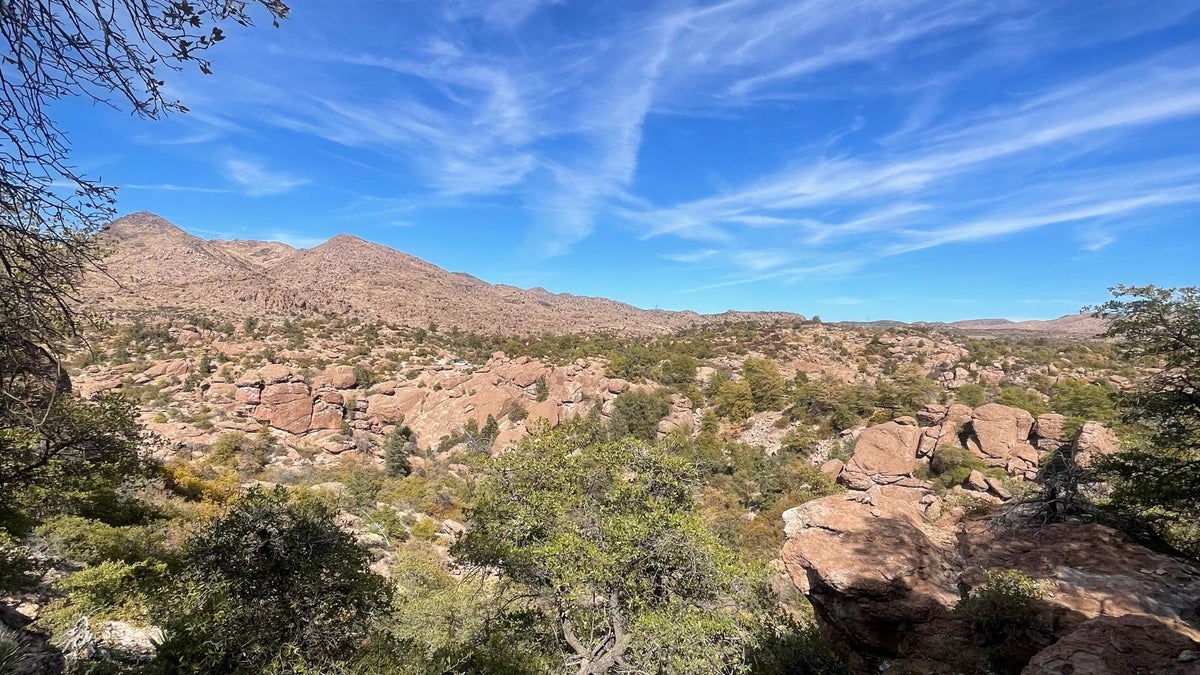
The Ninth Circuit Court granted a temporary injunction just before the planned transfer of Oak Flat to a copper mining company, in a small but meaningful delay in a long legal battle.
The post Judge Saves Iconic Climbing Area (For Now), With Less Than 24 Hours to Spare appeared first on Climbing.
]]>
It’s been a wild ride for the beloved climbing area known as Oak Flat. With just hours left before 2,400 acres of National Forest lands across Oak Flat fell into the hands of Resolution Copper, the U.S. Ninth Circuit Court of Appeals granted an emergency injunction to block the scheduled August 19 transfer.
This came on the heels of bad news for climbers, environmentalists, and local Indigenous communities on Friday, August 15, when U.S. District Judge Dominic W. Lanza ruled that the temporary pause on the Oak Flat transfer would expire, paving the way for the land transfer to Resolution Copper. In late June, Judge Lanza had granted a 60-day grace period after the release of the final Environmental Impact Statement before the land could be transferred. Ultimately, Lanza opted not to extend the hiatus.
Concerns from plaintiffs, including Access Fund, center upon the impacts of the mine to the local habitat, watershed, and recreational access. A subsidiary of multinational mining companies Rio Tinto and BHP, Resolution Copper plans to implement a mining technique to reach ore 7,000 feet underground that would leave behind a two-mile-wide, 1,000-foot deep crater.

In addition to its decades-long reputation as a climbing area accessible for residents of Scottsdale and Phoenix, Oak Flat hosted the Phoenix Bouldering Contest from 1989 to 2004, drawing competitors like Beth Rodden and Chris Sharma. Beyond the climbing access abounding in Oak Flat, the area serves an important role in the local watershed. Access Fund says the mine would deplete surface waters and threaten regional water availability. In the event of a tailings dam breach, the mine could also contaminate the local watershed, according to local reporting from AZ Central. Furthermore, Oak Flat (Chi’chil Biłdagoteel) is held sacred by the San Carlos Apache tribe and other tribes. The San Carlos Apache tribe has also been pursuing legal action to prevent the Oak Flat land transfer.
The next step in the process is for Access Fund, alongside a coalition of environmental and recreational nonprofits, as well as the San Carlos Apache Tribe, to make their case in the Ninth Circuit Court of Appeals, headquartered in San Francisco. The Appeals process will begin September 8. Following the news of the injunction, President Trump called the decision “Anti-American” in an August 19 post on Truth Social.
“The fight is not over, but this decision is a major step forward in defending this sacred and irreplaceable landscape,” says Erik Murdock, the deputy director of programs, policy, and government affairs at Access Fund.
To help prevent this mine from overtaking much of Oak Flat, the climbing community can stay tuned for updates from Access Fund and support their efforts in conserving this area.
This is a developing story that we will continue to update as new information become available.
The post Judge Saves Iconic Climbing Area (For Now), With Less Than 24 Hours to Spare appeared first on Climbing.
]]>